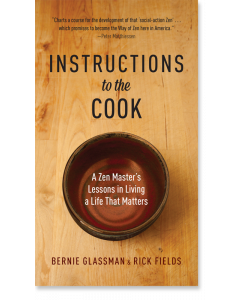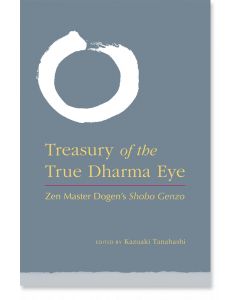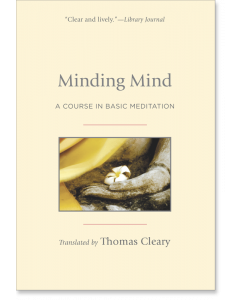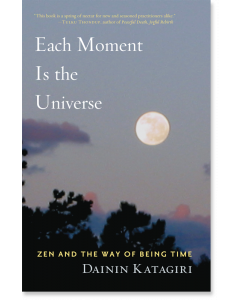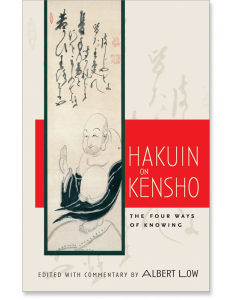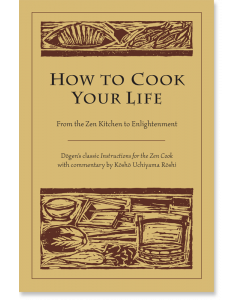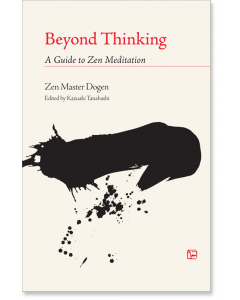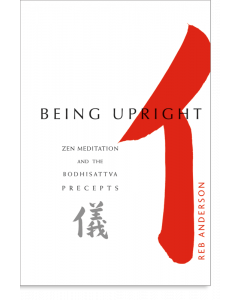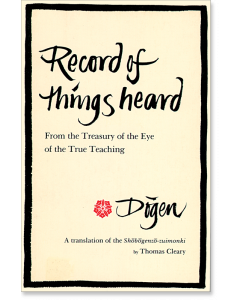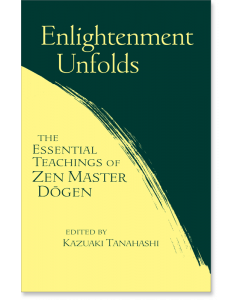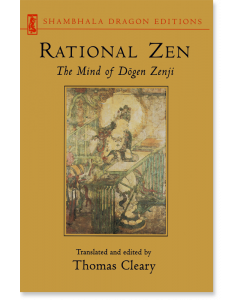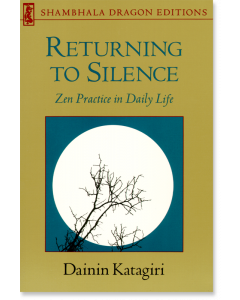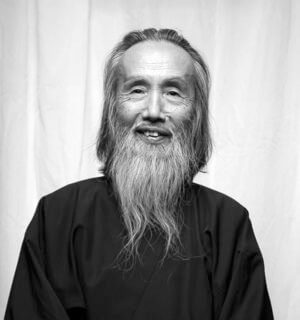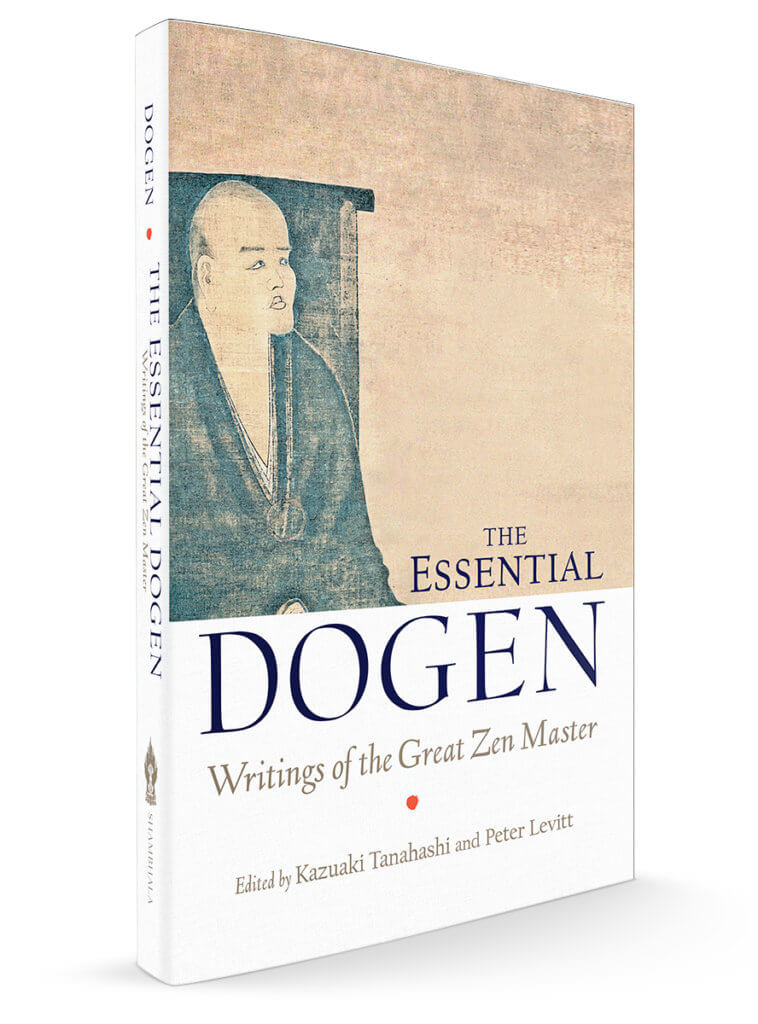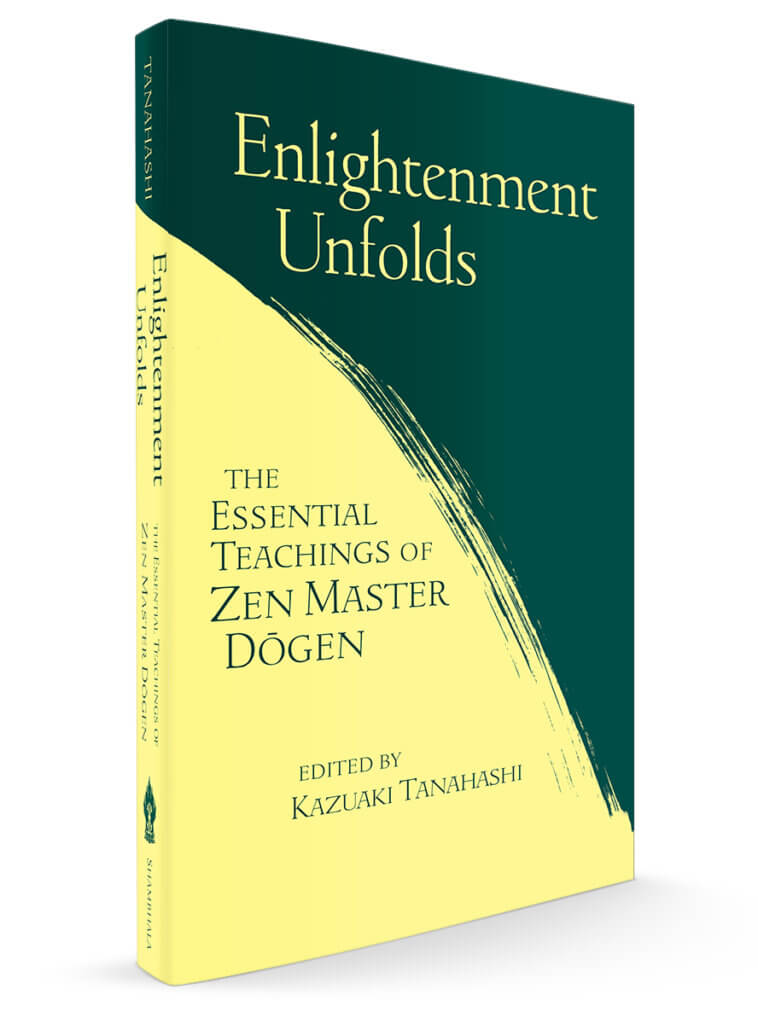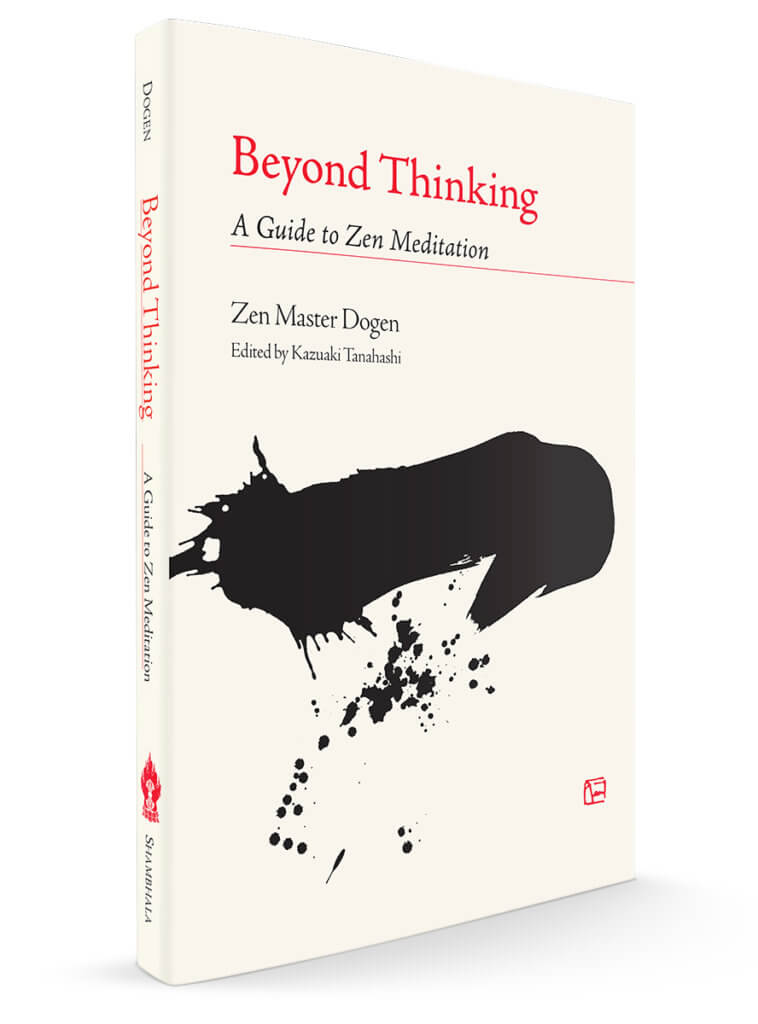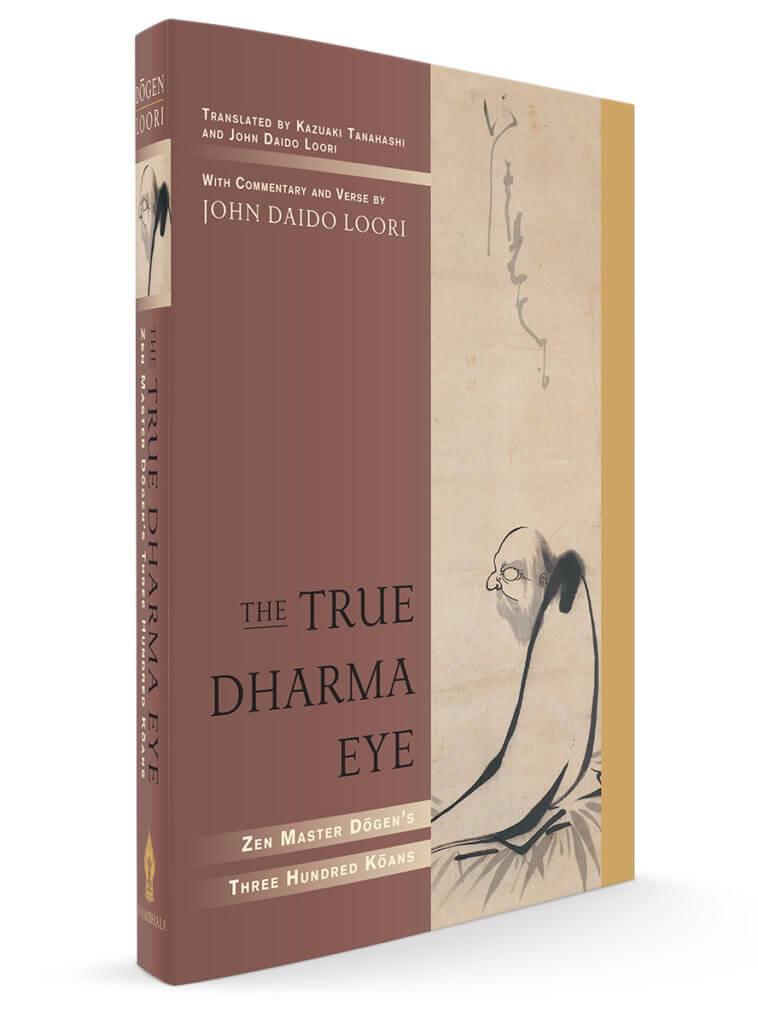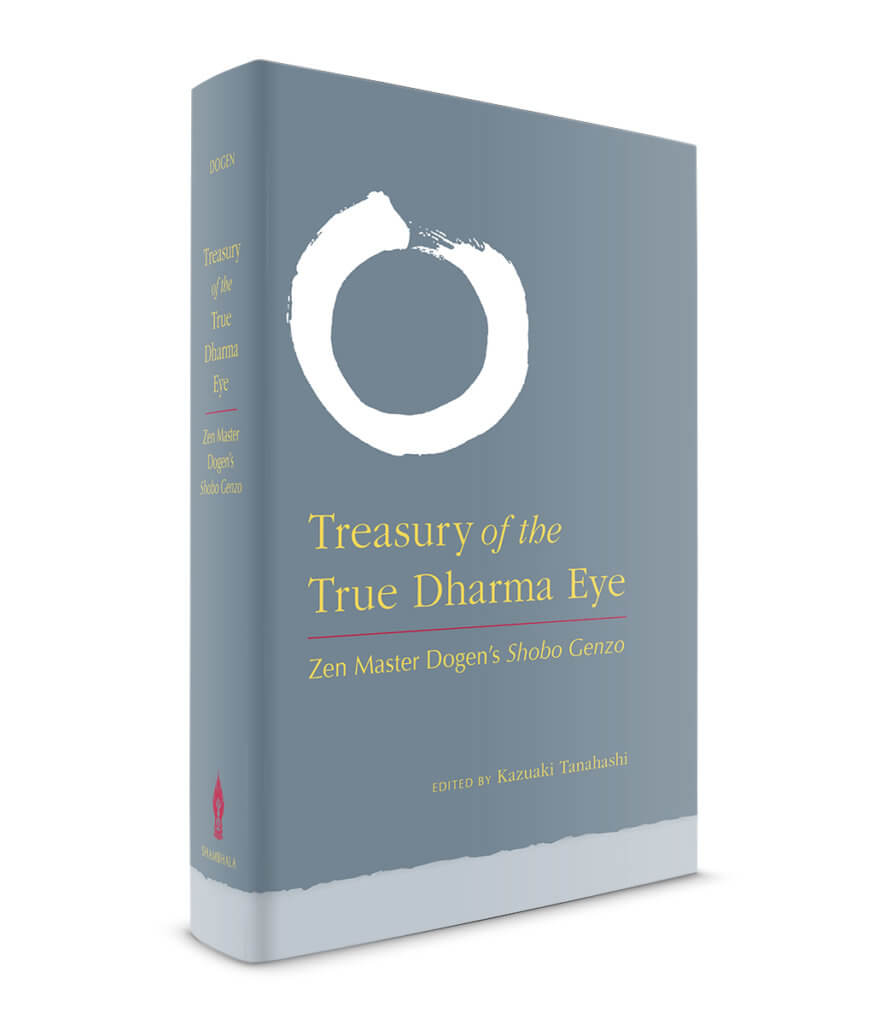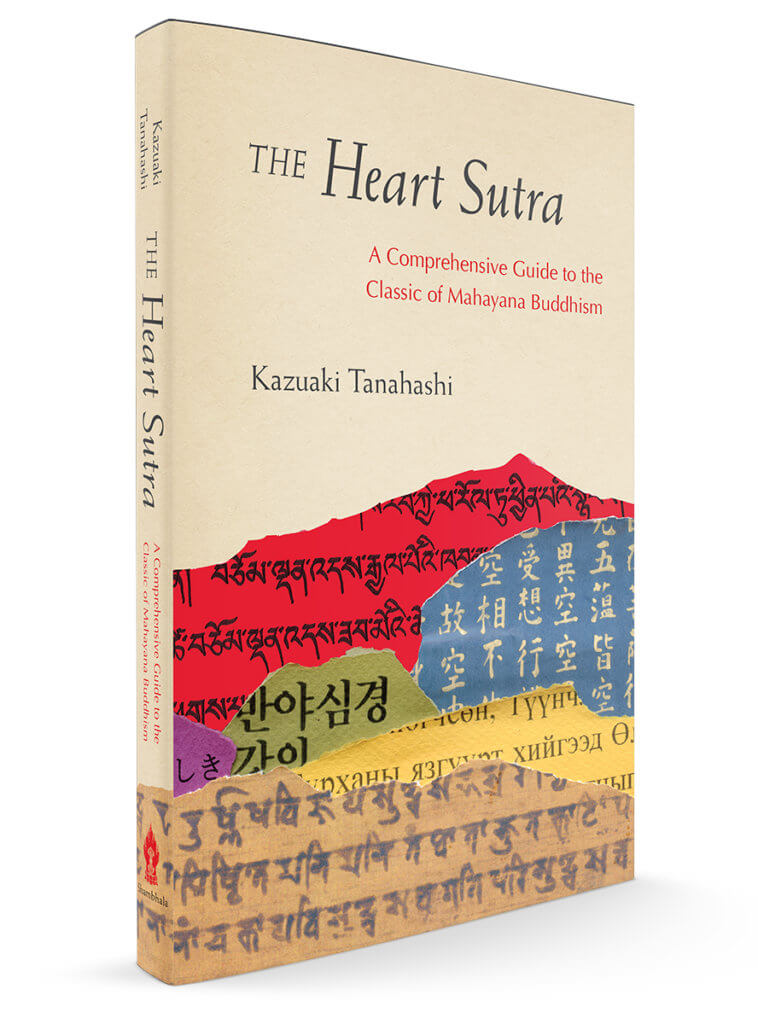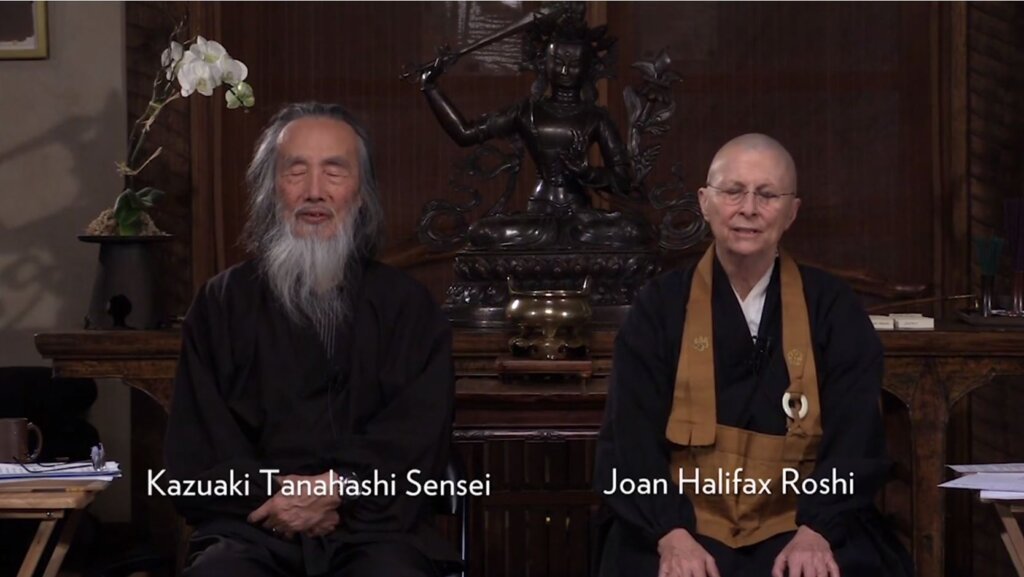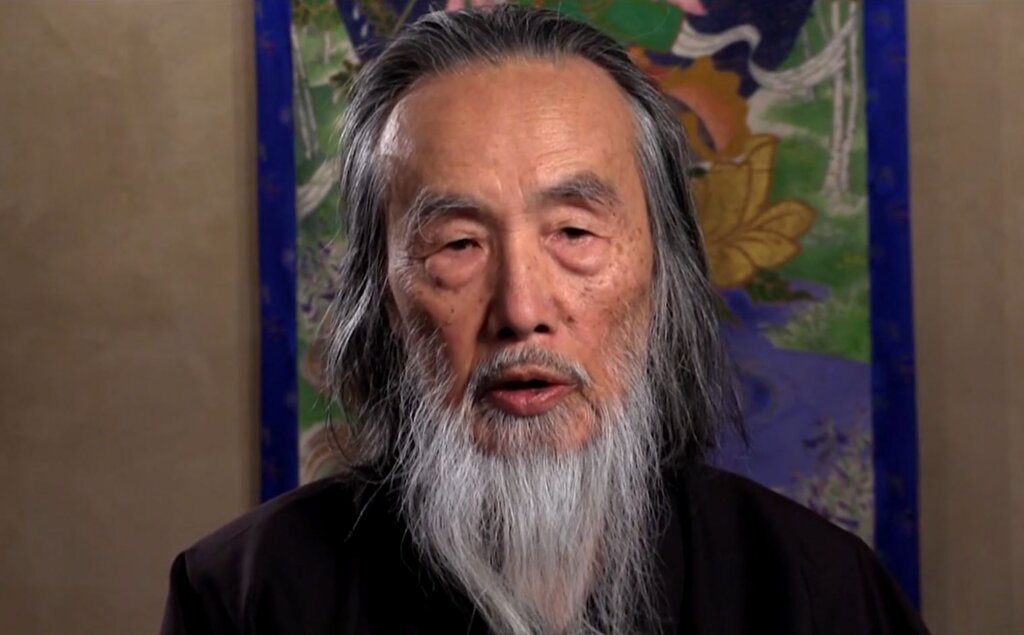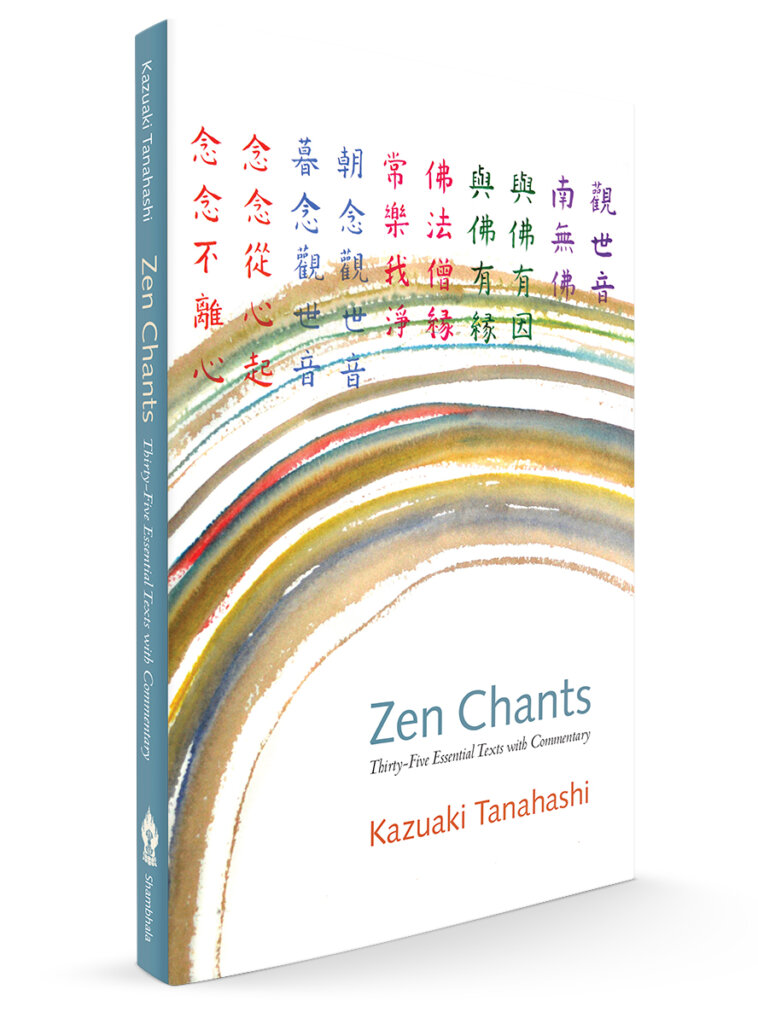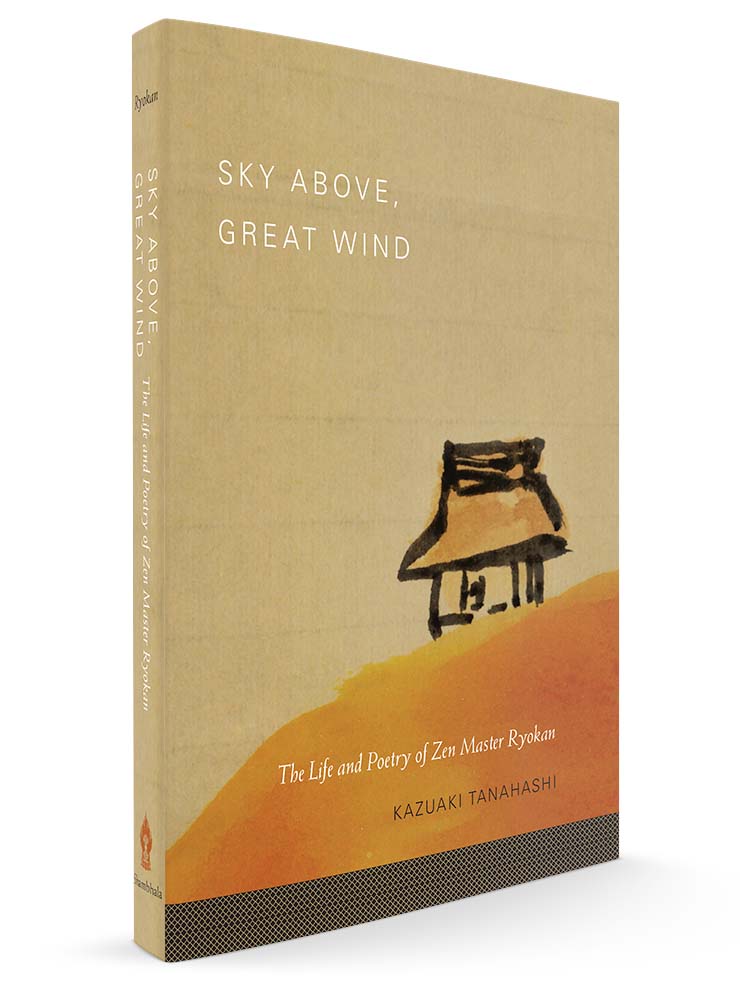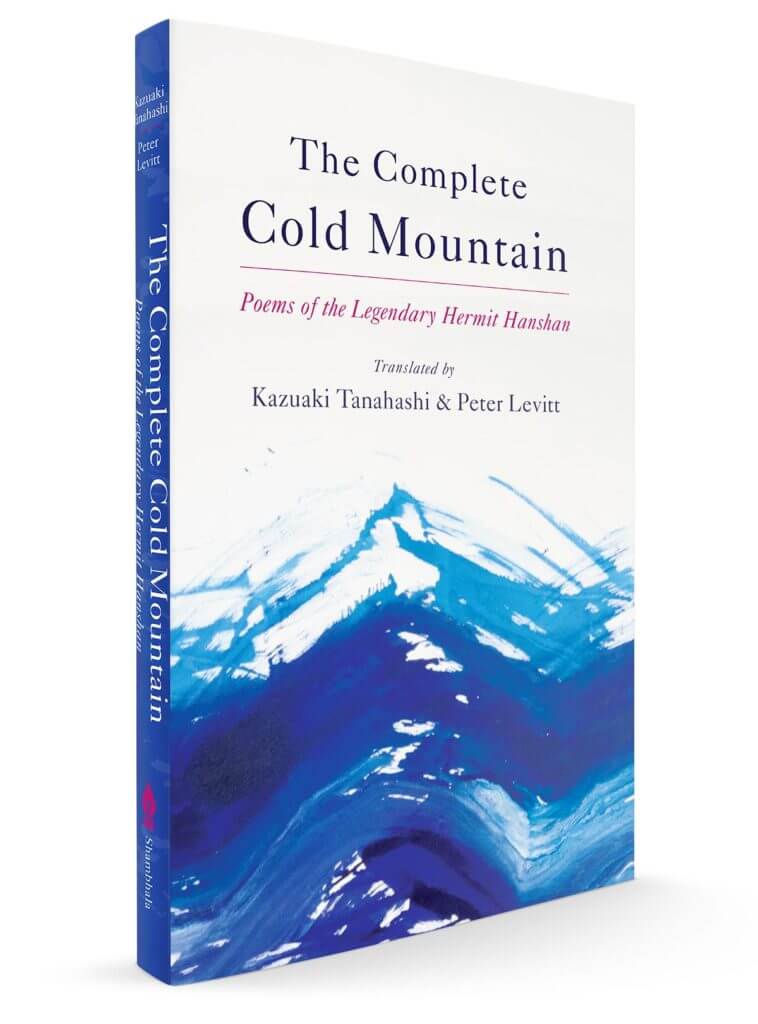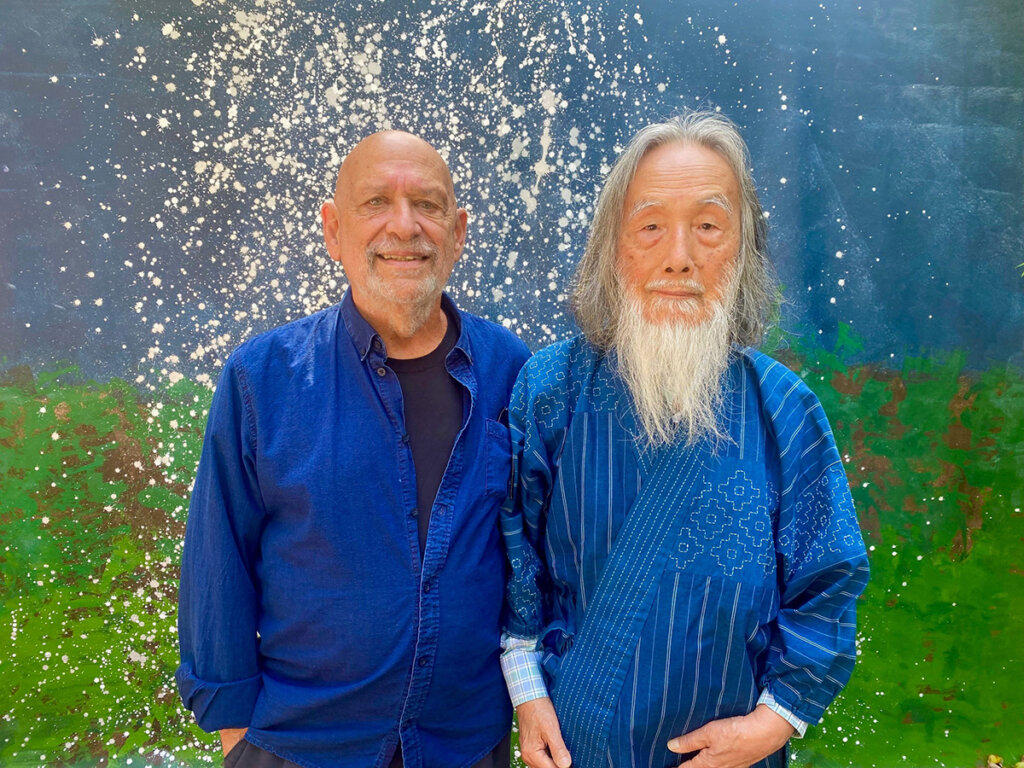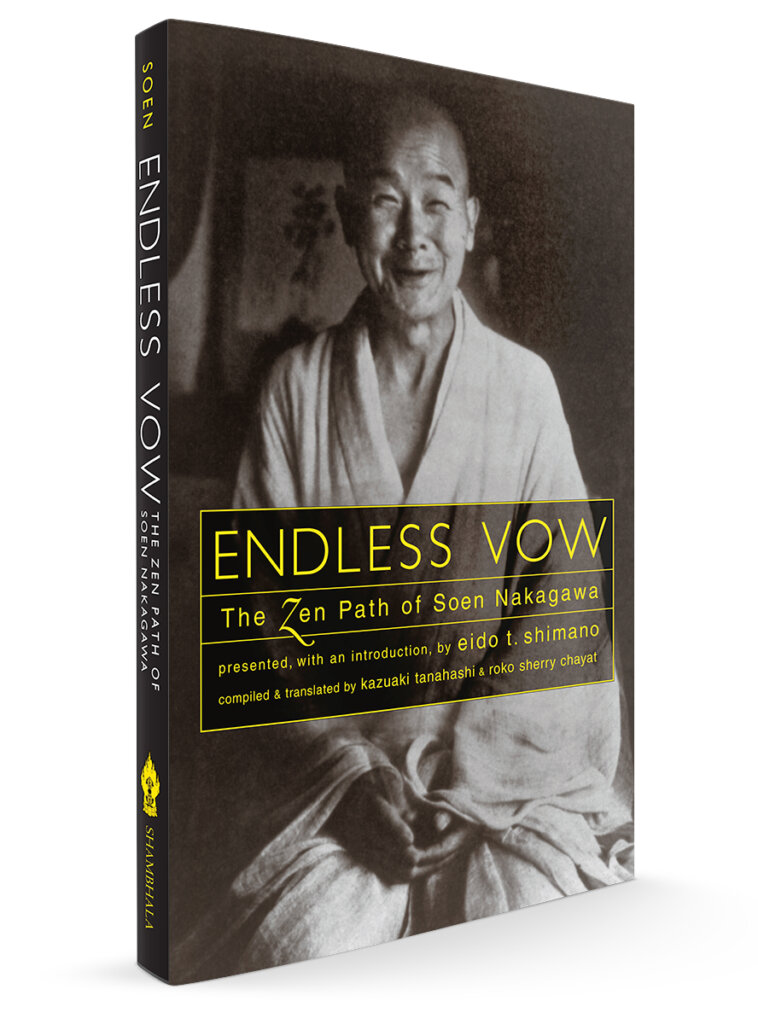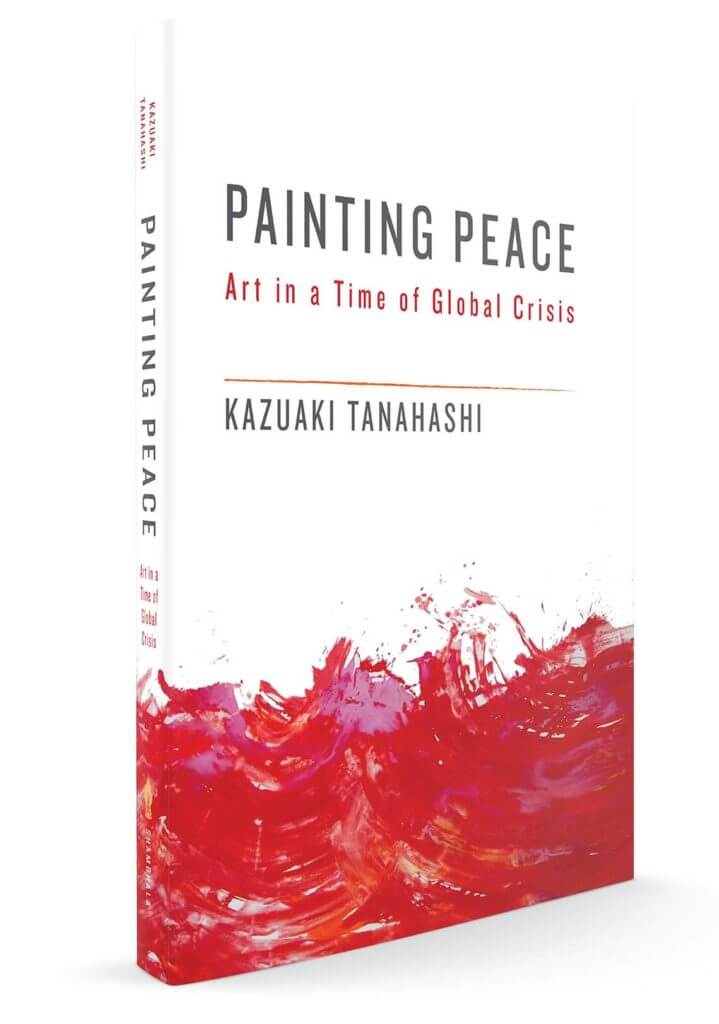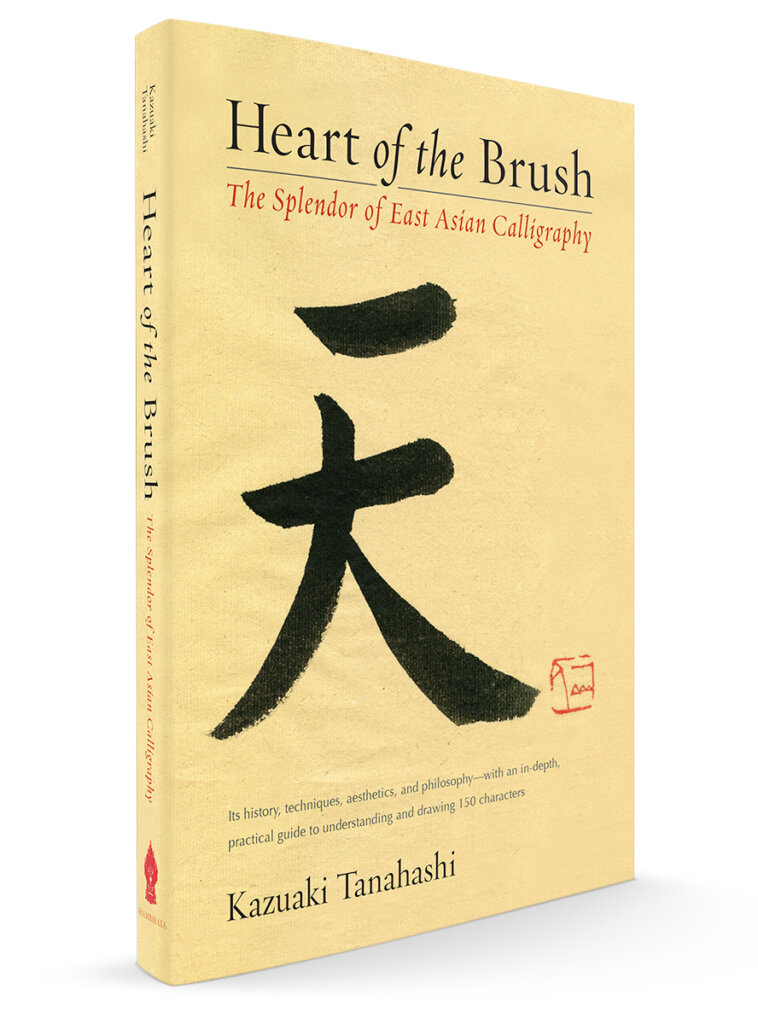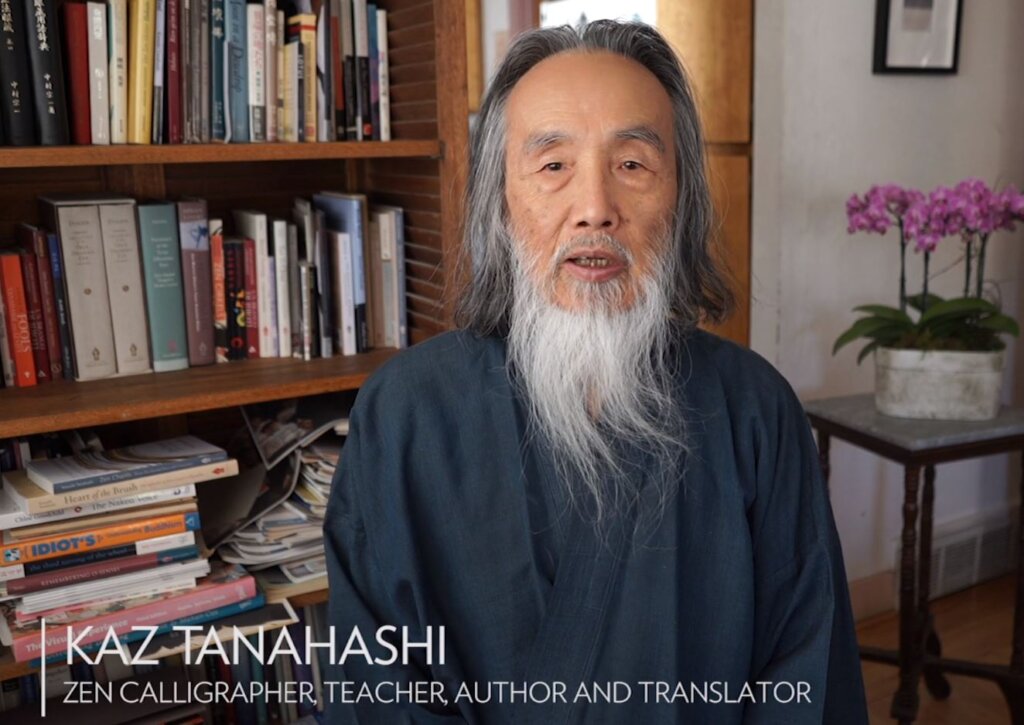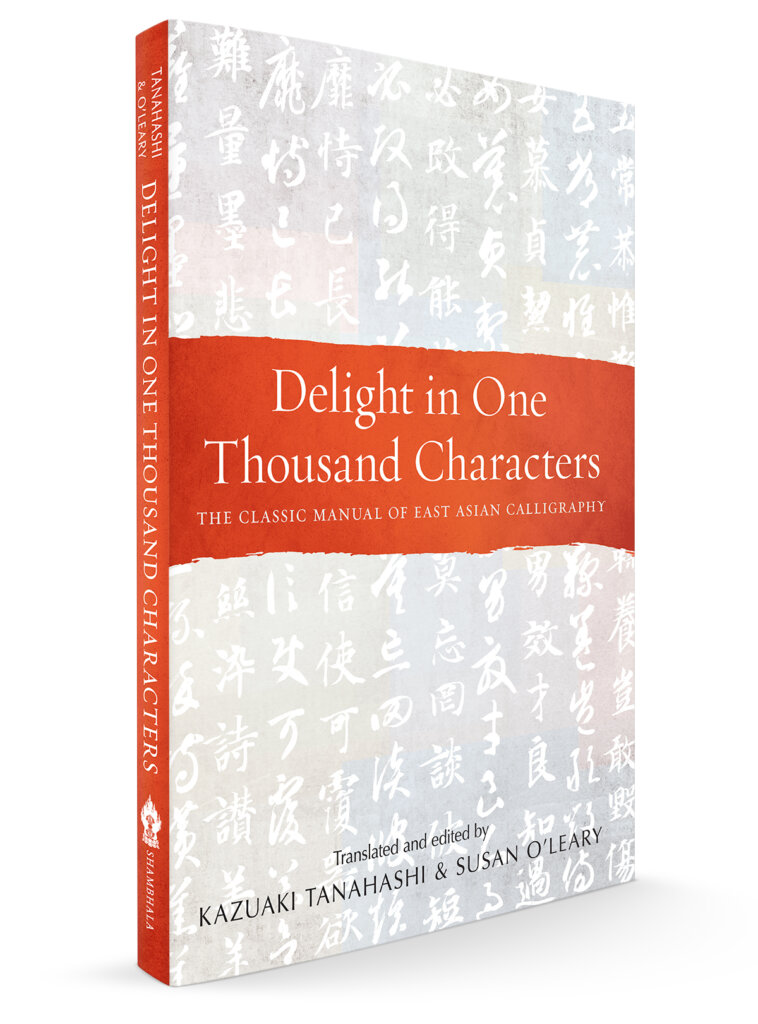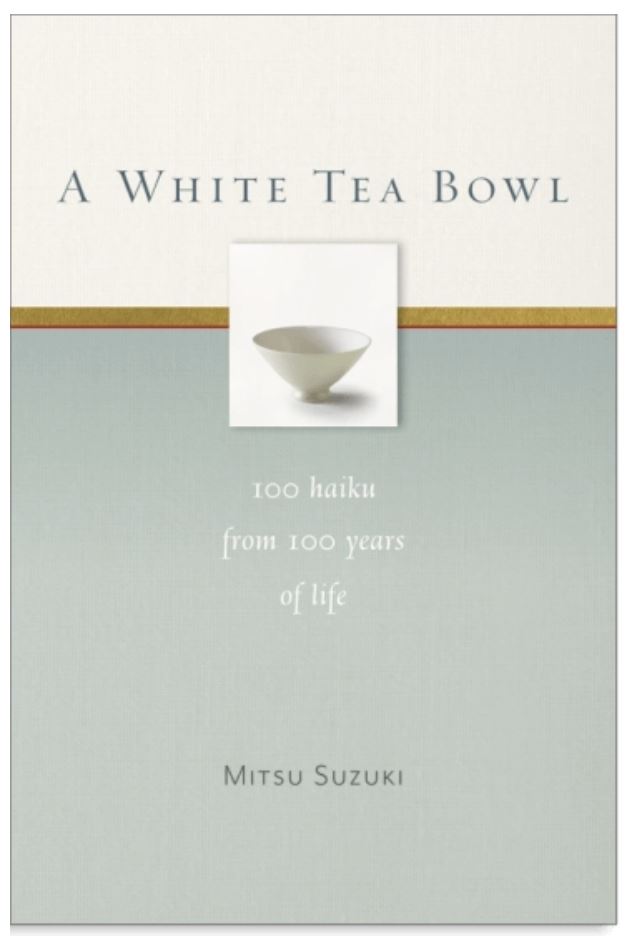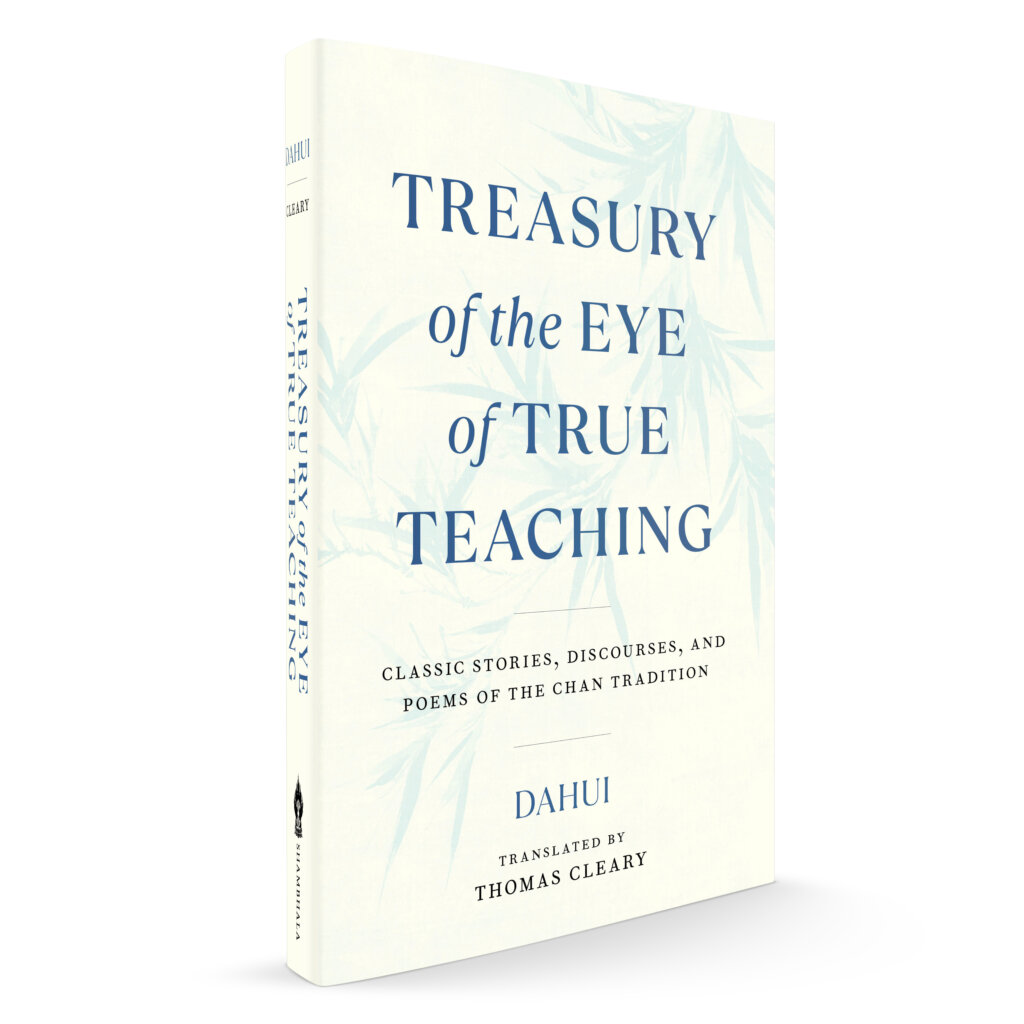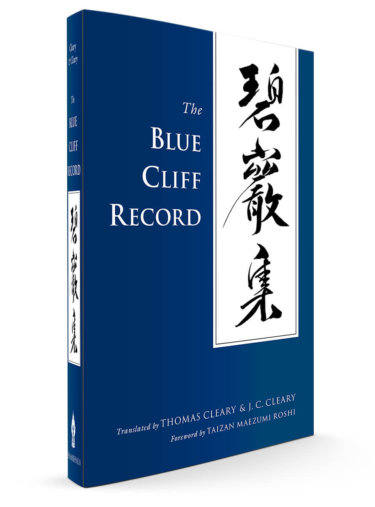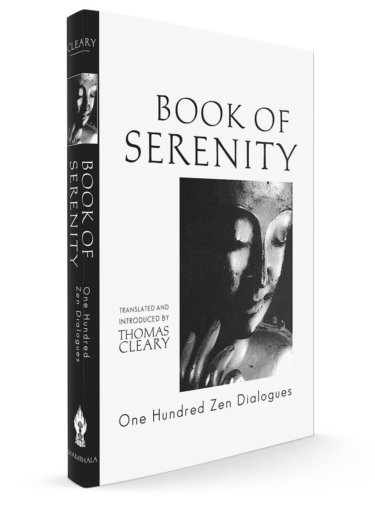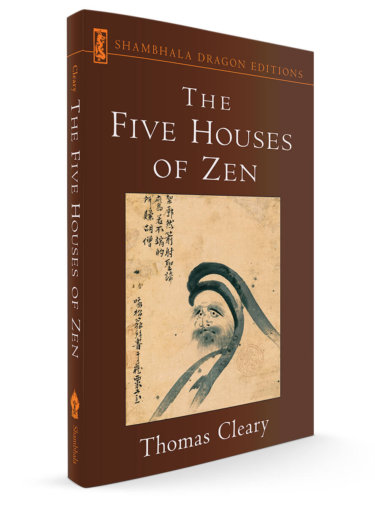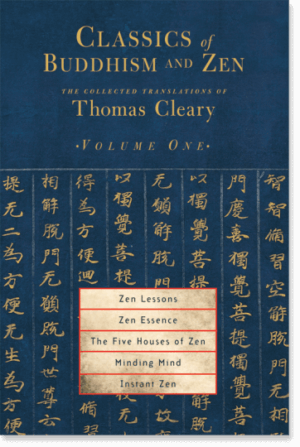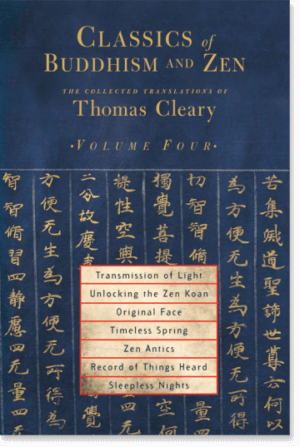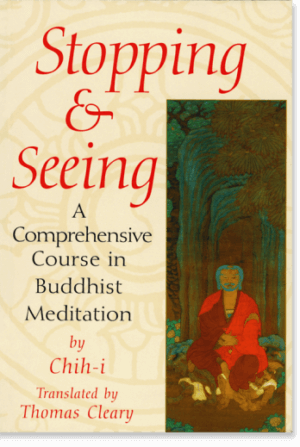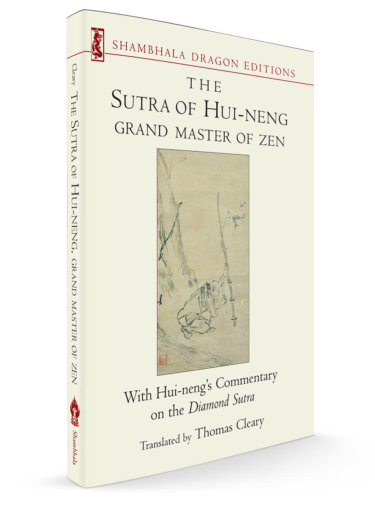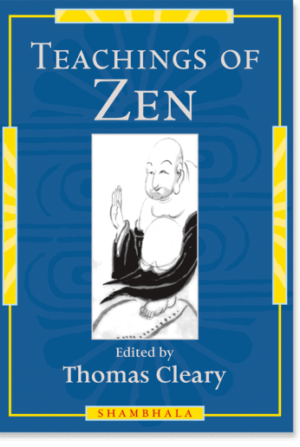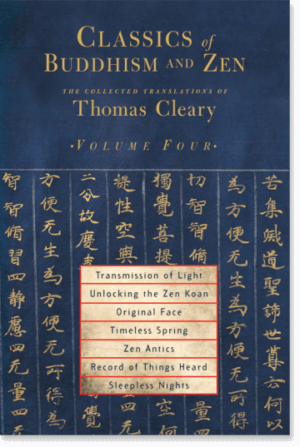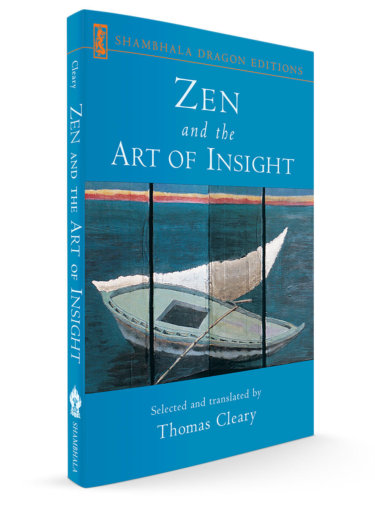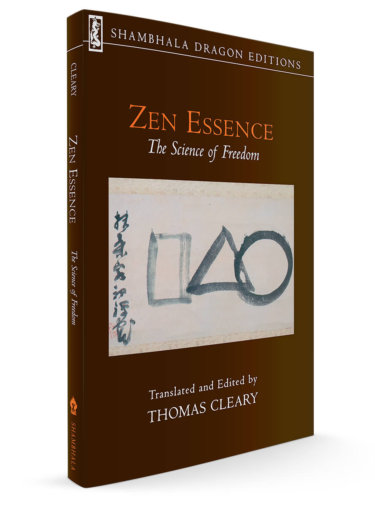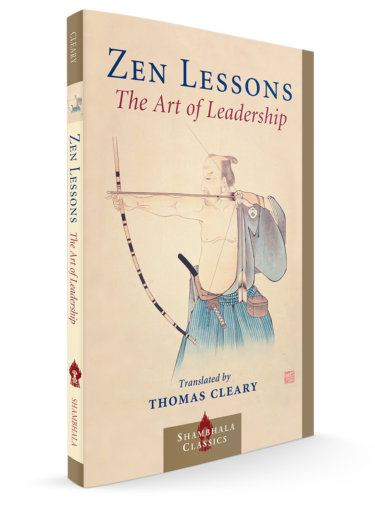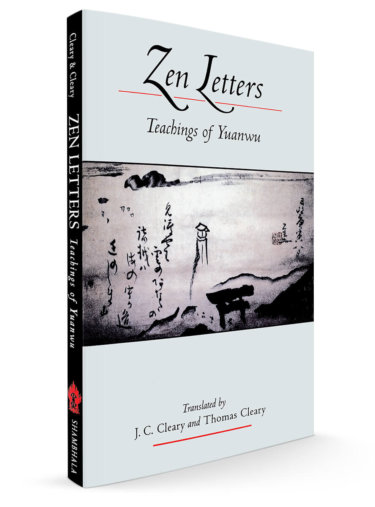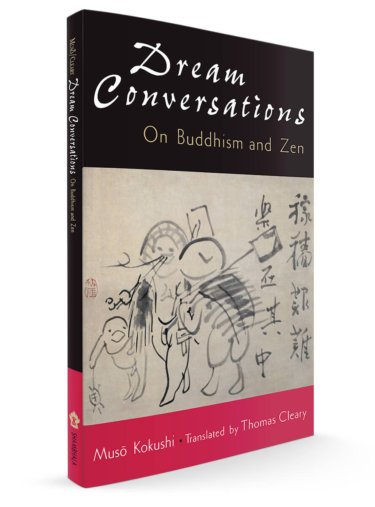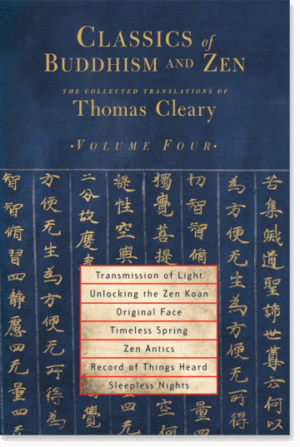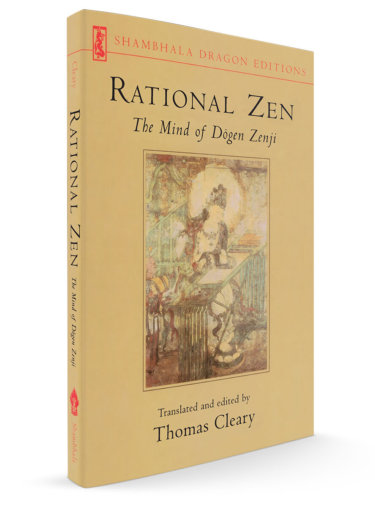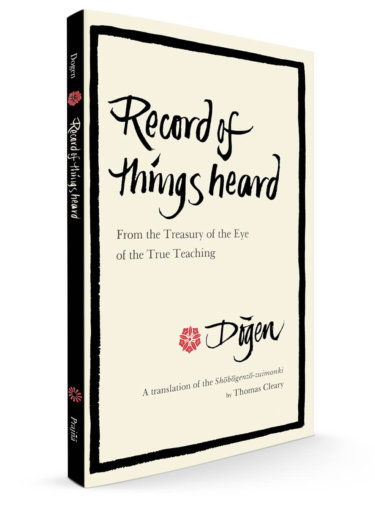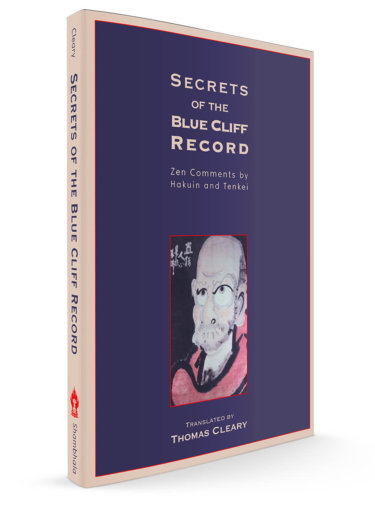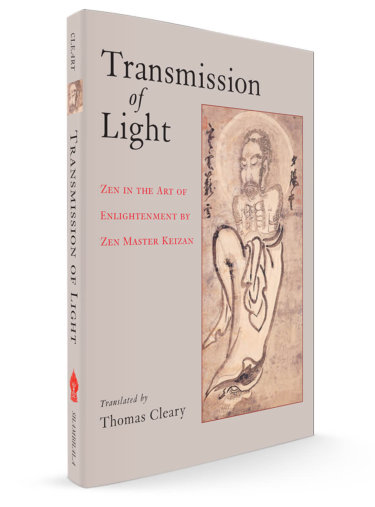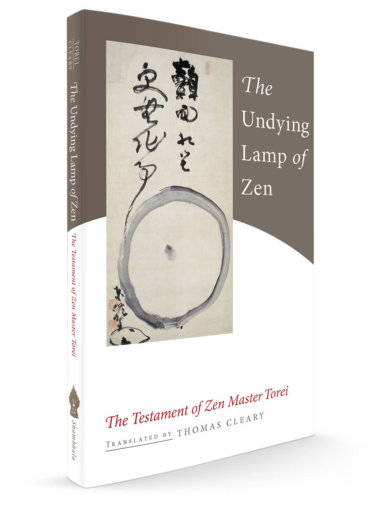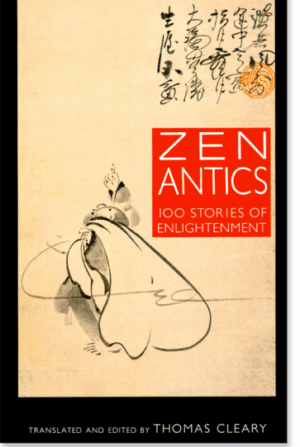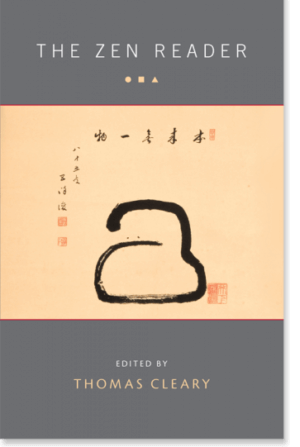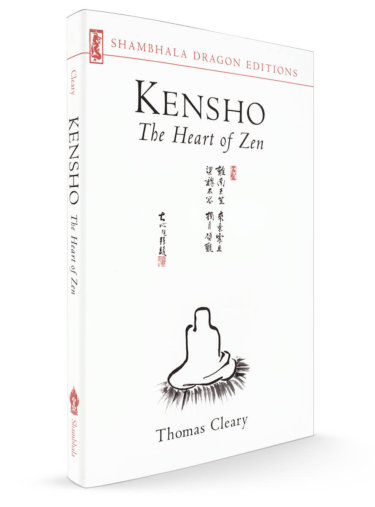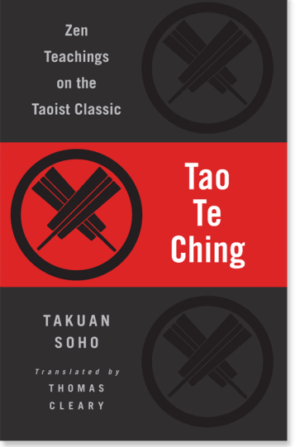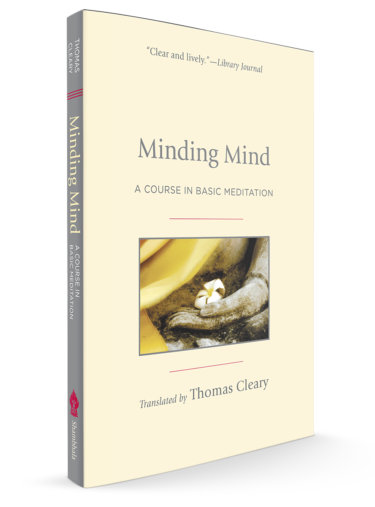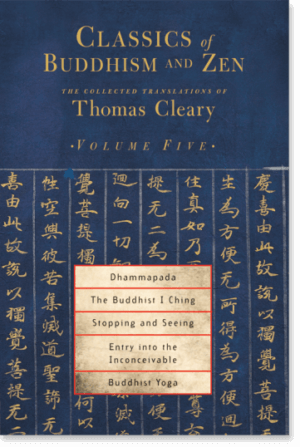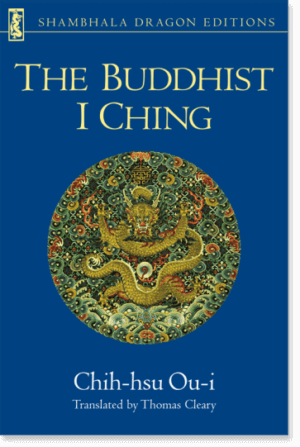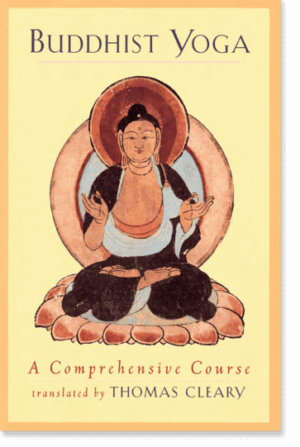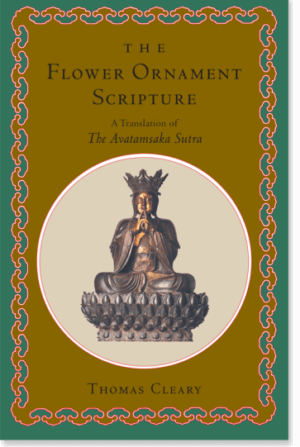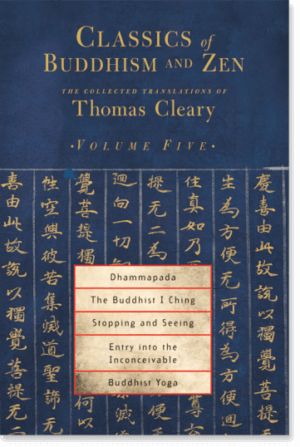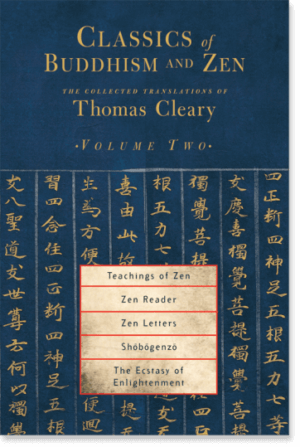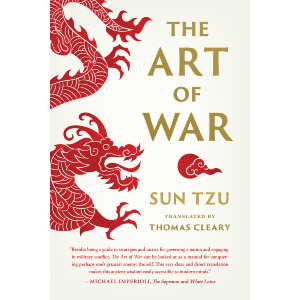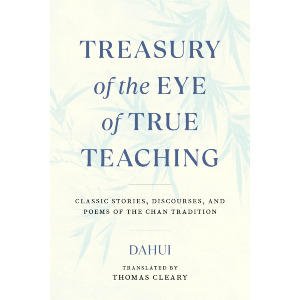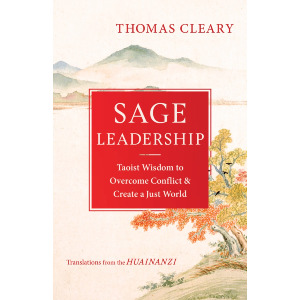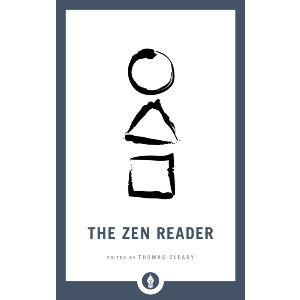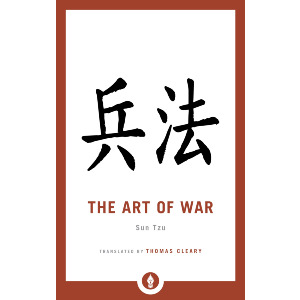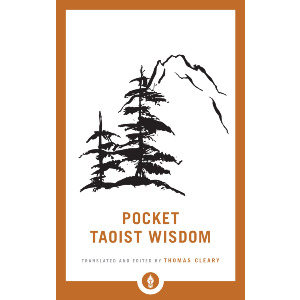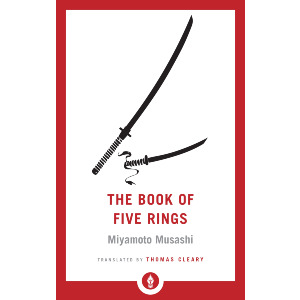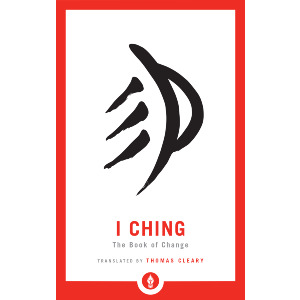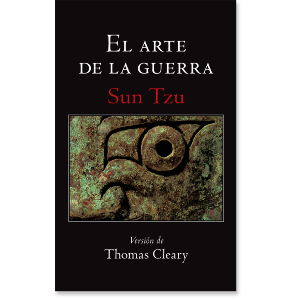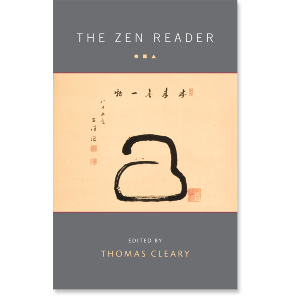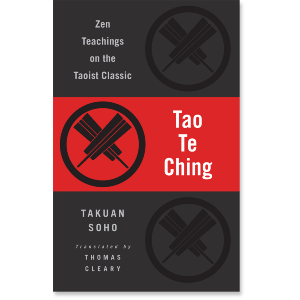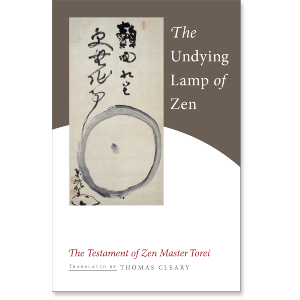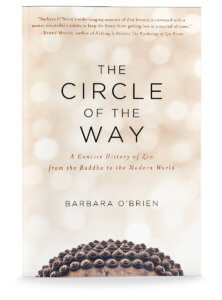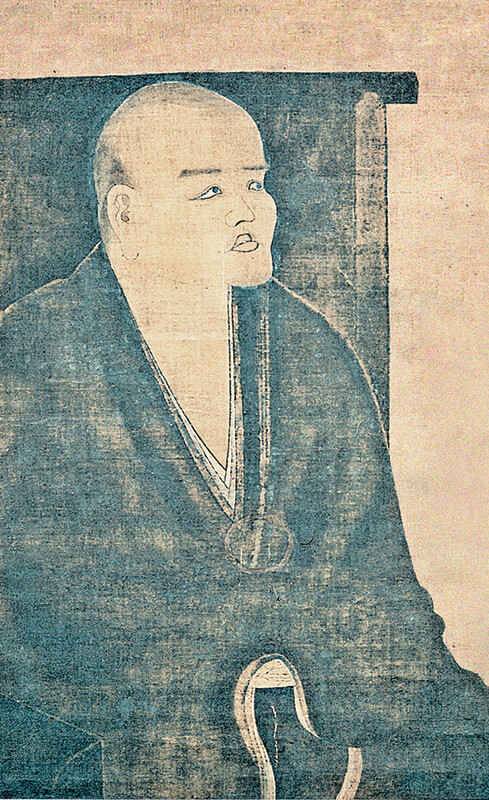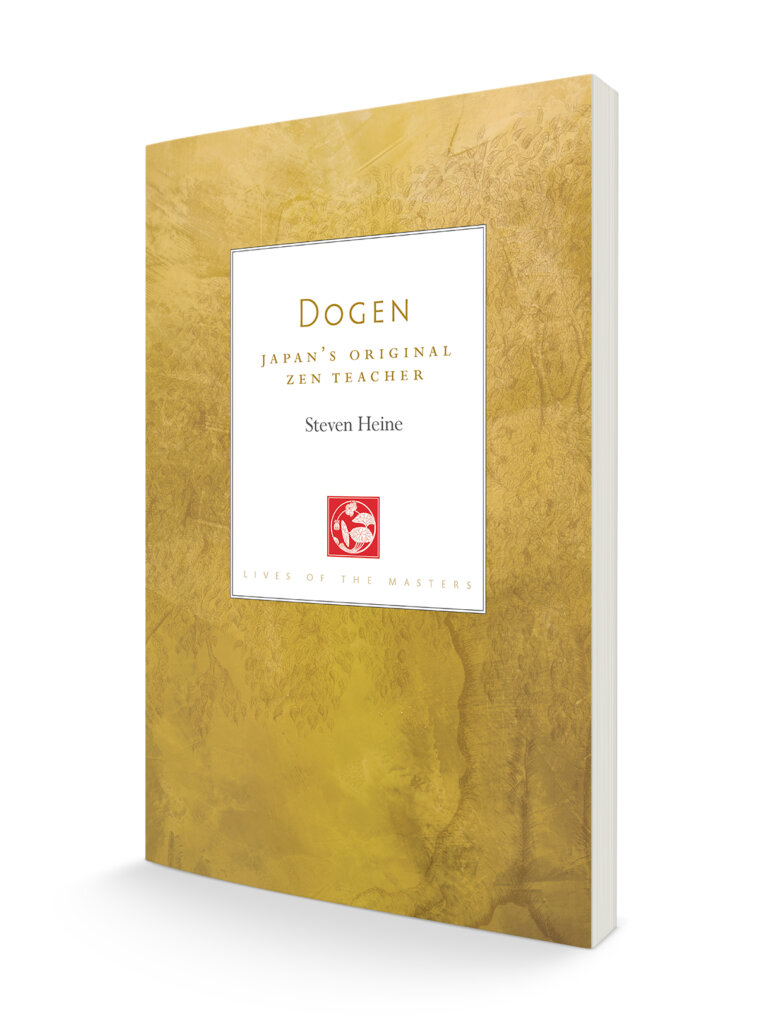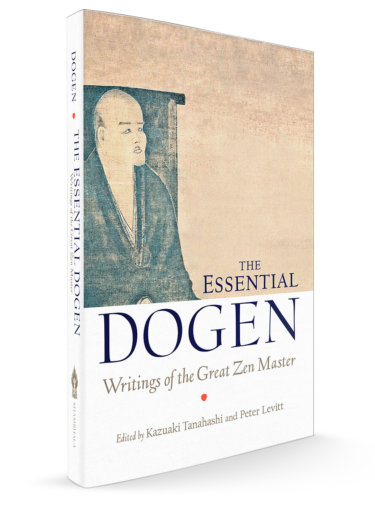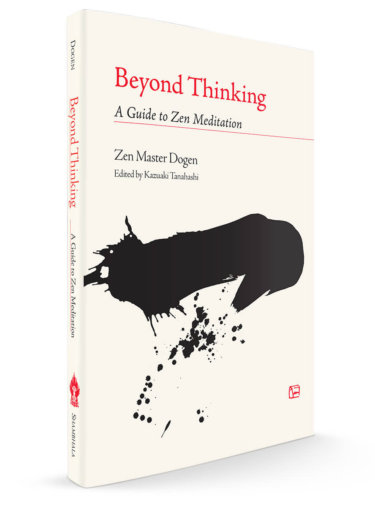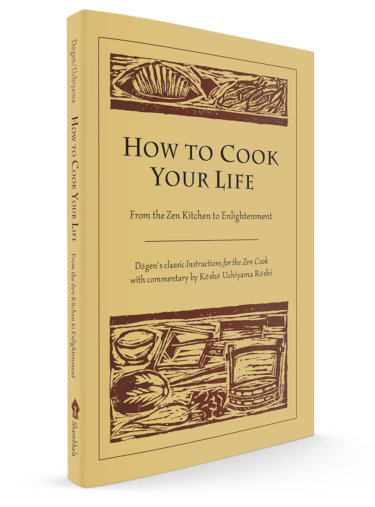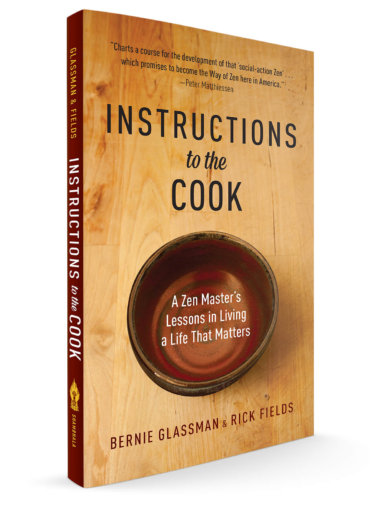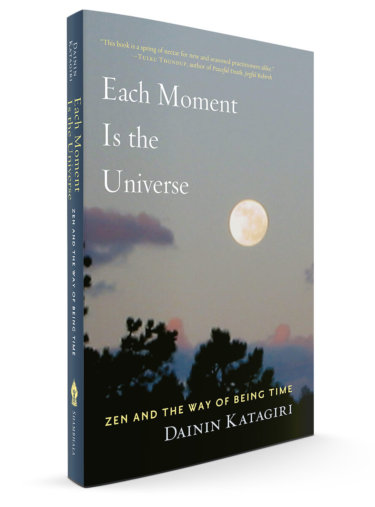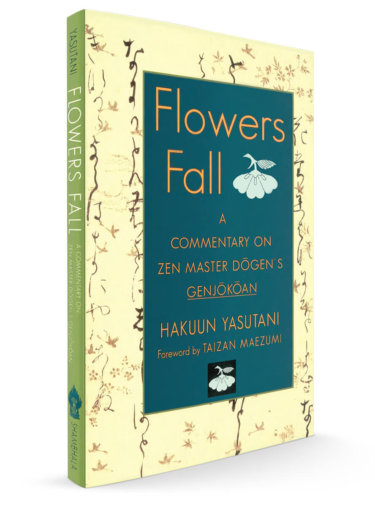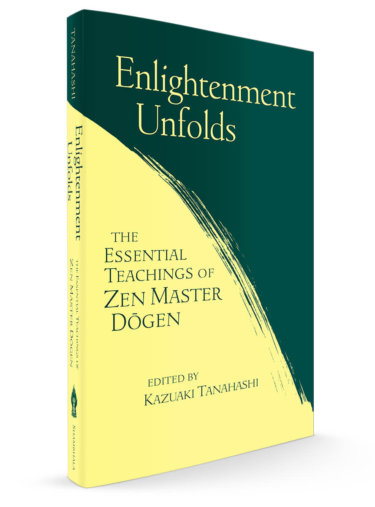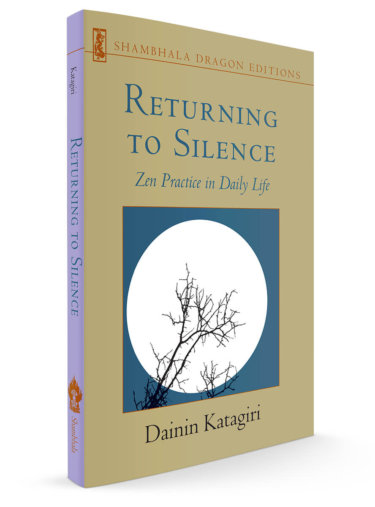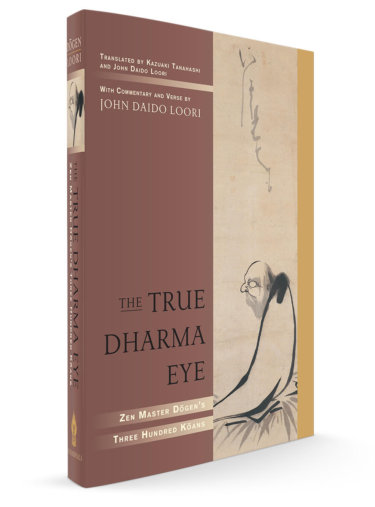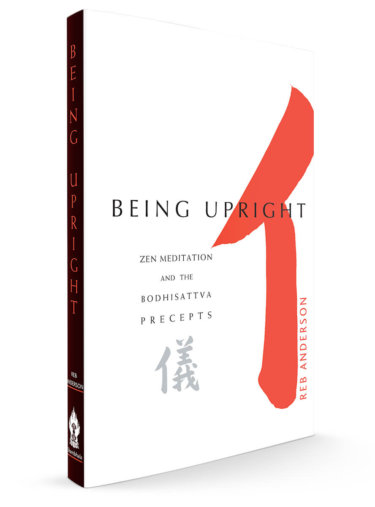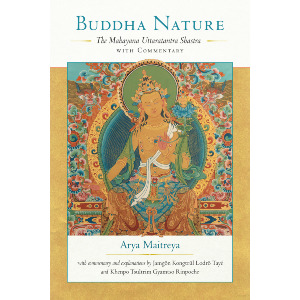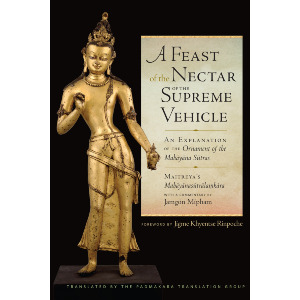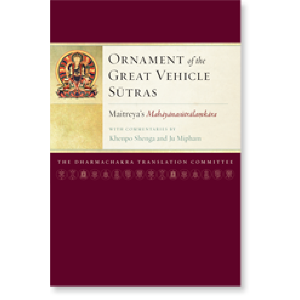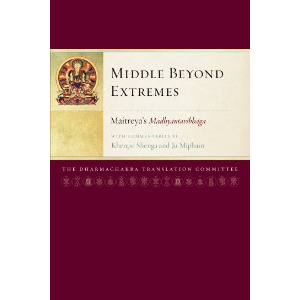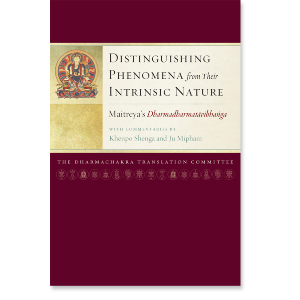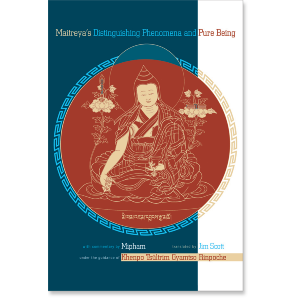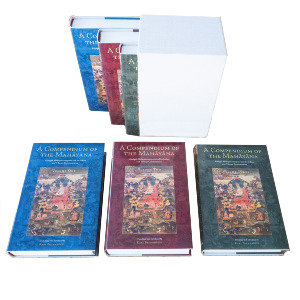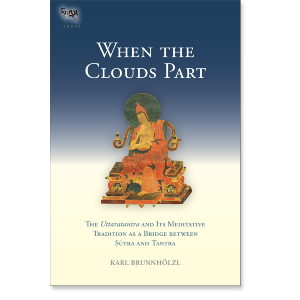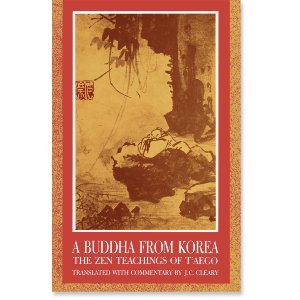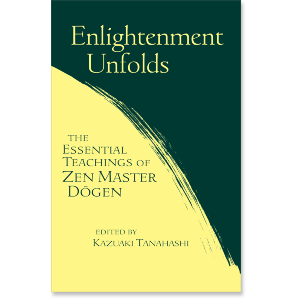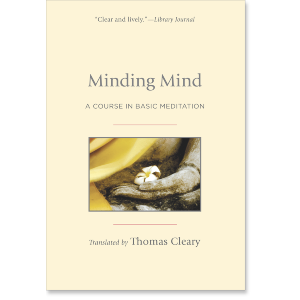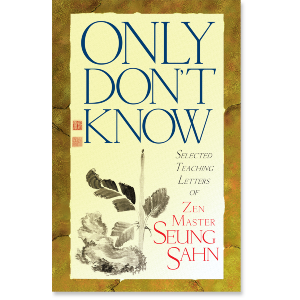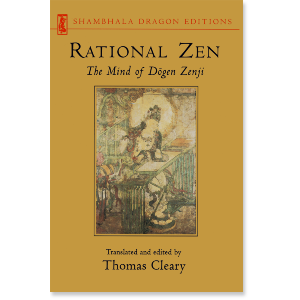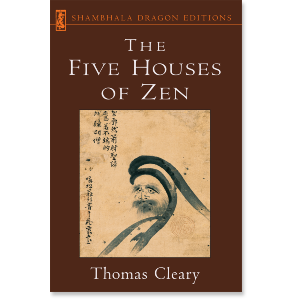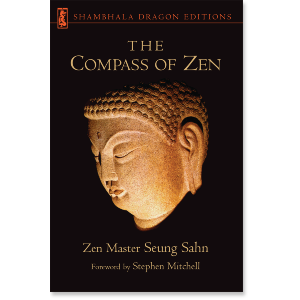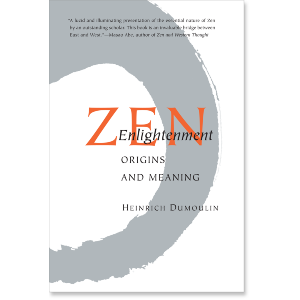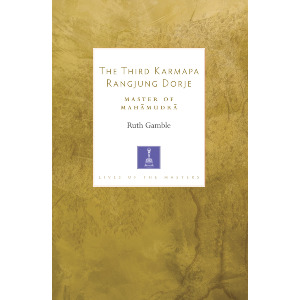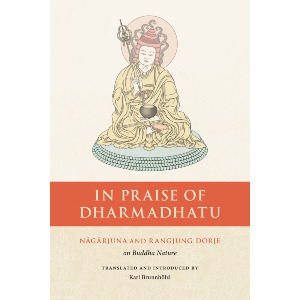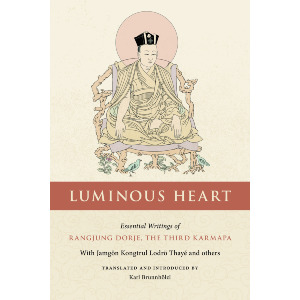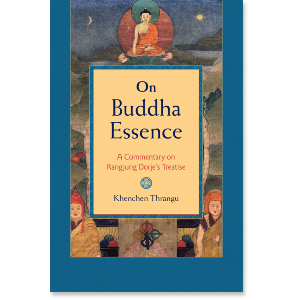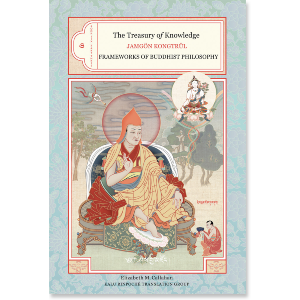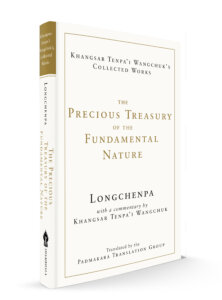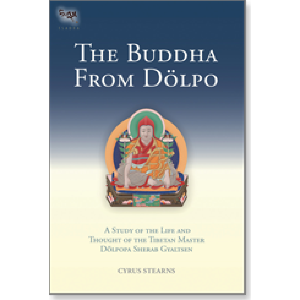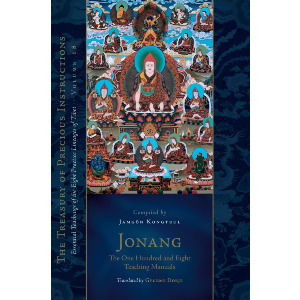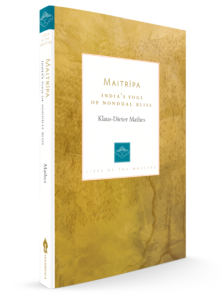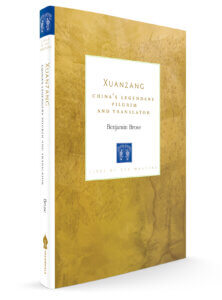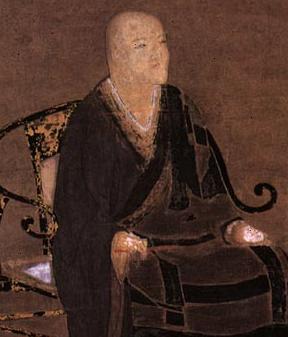

Zen Master Dogen
-
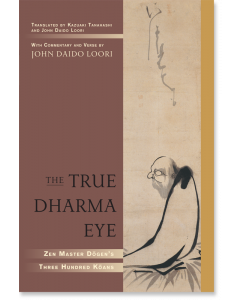 The True Dharma Eye$39.95- Paperback
The True Dharma Eye$39.95- PaperbackTranslated by John Daido Loori
Translated by Kazuaki Tanahashi
By Zen Master Dogen -
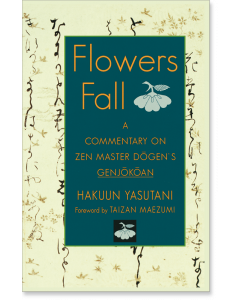 Flowers Fall$24.95- Paperback
Flowers Fall$24.95- PaperbackTranslated by Paul Jaffe
By Hakuun Yasutani
Foreword by Taizan Maezumi
- Bestsellers Zen 1 item
- Buddhist Biography/Memoir 1 item
- Buddhist Ethics 1 item
- Bodhisattva Path 1 item
- Chan/Chinese Zen 1 item
- Pure Land 1 item
- Dogen 9item
- Hakuin 1 item
- Japanese Zen 11item
- Koan practice 1 item
- Korean Buddhism 1 item
- Rinzai 1 item
- Shobogenzo 6item
- Soen 1 item
- Soto 2item
- Biography 1 item
GUIDES
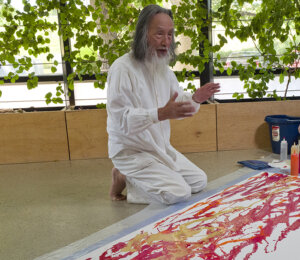
Kazuaki Tanahashi: A Guide for Readers

Kazuaki (Kaz) Tanahashi is a gem with many facets: peace and environmental activism, generosity, art, poetry, creativity and more.
Below you will find many of his contributions in book form, sometimes as translator, sometimes as editor, sometimes as author, always as collaborator. One of the things you will notice with any of the books Kaz is involved with is that they are a team effort, assisted by his vast network of friends and admirers.
We have separated his works across a few categories you can jump to from here: those on art and calligraphy; the great Zen master Dogen; Hanshan, Ryoken, and Soen Nakagawa; and the Heart Sutra and other Zen chants.
We put this reader guide together to mark his 90th birthday which was celebrated at Green Gulch Zen Center in September, 2023, but his output has not slowed and additional books will be added here as they come out.

On Dogen
Unsurprisingly, Dogen has been a major focus of Kaz's translation work. As the spearhead of a project involving many from the San Francisco Zen Center community, Kaz has edited, compiled, introduced and translated multiple works of Dogen. The first, Moon in a Dewdrop, is still in print but with another publisher. The others are below, culminating in Dogen's masterpiece, The Treasury of the True Dharma Eye.
Paperback | Ebook
$21.95 - Paperback
On this volume, Kaz writes,
This volume is intended to make [Dogen's] writings easily accessible to readers, including those who are not familiar with Zen or Buddhism in general. Peter Levitt and I have selected passages from Dogen’s enormous body of work throughout his career and classified them according to theme. We hope that this approach will help those who are interested in his thinking and teachings on various topics. We have also included a selection of Dogen’s poems that, at a glance, might appear eccentric or absurd but may be more easily understood when placed in the context of his other writings.
Paperback | Ebook
$24.95 - Paperback
Enlightenment Unfolds: The Essential Teachings of Zen Master Dogen
Enlightenment Unfolds is a sequel to Kaz Tanahashi's previous collection, Moon in a Dewdrop.
Tanahashi has brought together his own translations of Dogen with those of some of the most respected Zen teachers and writers of our own day, including Reb Anderson, Edward Espe Brown, Norman Fisher, Gil Fronsdal, Blanche Hartman, Jane Hirschfield, Daniel Leighton, Alan Senauke, Katherine Thanas, Mel Weitzman, and Michael Wenger.
Paperback | Ebook
$22.95 - Paperback
Beyond Thinking: A Guide to Zen Meditation
On this volume, another collaboration of many contributors, Kaz writes,
For this book we have selected his essays, talks, and instructions that touch on various aspects of Zen meditation. We present the text in four parts: ‘‘Entering Zazen,’’ ‘‘Zazen Experience,’’ ‘‘Zazen in Community,’’ and ‘‘Zazen through the Seasons.’’
In focusing on Dogen's most practical words of instruction and encouragement for Zen students, this collection highlights the timelessness of his teaching and shows it to be as applicable to anyone today as it was in the great teacher's own time. Selections include Dogen's famous meditation instructions; his advice on the practice of zazen, or sitting meditation; guidelines for community life; and some of his most inspirational talks. Also included are a bibliography and an extensive glossary.
Paperback | Ebook
$39.95 - Paperback
Distinct from the Treasury of the True Dharma Eye below, this is a collection of three hundred koans compiled by Dogen which presents readers with a uniquely contemporary perspective on his profound teachings and their relevance for modern Western practitioners of Zen. Following the traditional format for koan collections, John Daido Loori Roshi, an American Zen master, has added his own commentary and accompanying verse for each of Dogen’s koans. Kaz Tanahashi translated this work. Zen students and scholars will find The True Dharma Eye to be a source of deep insight into the mind of one of the world’s greatest religious thinkers, as well as the practice of koan study itself.
Hardcover | Ebook
$100.00 - Hardcover
Treasury of the True Dharma Eye (Shobo Genzo, in Japanese) is Dogen's manum opus and a monumental work, considered to be one of the profoundest expressions of Zen wisdom ever put on paper, and also the most outstanding literary and philosophical work of Japan. It is a collection of essays by Eihei Dogen (1200–1253), founder of Zen’s Soto school.
Kazuaki Tanahashi and a team of translators that represent a Who’s Who of American Zen have produced a translation of the great work that combines accuracy with a deep understanding of Dogen’s voice and literary gifts. This volume includes a wealth of materials to aid understanding, including maps, lineage charts, a bibliography, and an exhaustive glossary of names and terms—and, as a bonus, the most renowned of all Dogen’s essays, “Recommending Zazen to All People.”
The Heart Sutra and Zen Chants
Paperback | Ebook
$24.95 - Paperback
The Prajna Paramita Hridaya Sutra is among the best known of all the Buddhist scriptures. Chanted daily by many Zen students, it is also studied extensively in the Tibetan tradition, and it has been regarded with interest more recently in the West in various fields of study—from philosophy to quantum physics. In just thirty-five lines, it expresses the truth of impermanence and the release from suffering that results from the understanding of that truth with a breathtaking economy of language. Kazuaki Tanahashi’s guide to the Heart Sutra is the result of a life spent working with it and living it.
The book is divided into six parts. In Kaz's words:
"Part One, 'The Heart Sutra Here and Now,' presents a new translation of the text by Joan Halifax and myself. Our intention is to bring forth the sutra’s essential teaching of transcendence and freedom, which is often obscured by seemingly pessimistic and nihilistic expressions. We use the word “boundlessness” instead of the more common translation “emptiness” for the Sanskrit word shunyata. We use “free of the eyes, ears, nose . . .” instead of the usual rendition “no eyes, no ears, no nose . . .” Because we want to make the sutra accessible to non-Buddhists as well as Buddhists, we have replaced such traditional technical terms as bodhisattva and nirvana with more easily understandable words. I hope those of you who are used to chanting the common English versions of the sutra will find our translation helpful and thought-provoking. This first part also includes stories of my own affinity with the scripture and its potential to inspire us all.
Part Two, 'Story of the Sutra,' introduces ancient recountings of its use as a living text, as well as descriptions of my visits to temples in Korea and Japan, where I conducted research on the historical impact of the sutra.
Parts Three and Four, 'Modern Scholarship' and 'Most Recent Scholarship,' discuss scholarly findings over the course of two centuries about the formation and expansion of the text.
Part Five, 'Globalizing the Sutra,' discusses Chinese enthusiasm for and pan-Asian responses to the text, as well as examples of how the sutra has inspired modern scientists.
Part Six, 'Terms and Concepts,' includes semantic, etymological, and grammatical analyses of the Sanskrit and Chinese terms in the text. Most of the words in the sutra have Sanskrit origins, so looking at these terms is extremely fruitful. A Chinese version has become the standard text in East Asia, however, and was the basis for some of the translations of the sutra in European languages. Three English translations are also included here: the version by F. Max Müller from the late nineteenth century, as well as those by D. T. Suzuki and Edward Conze from the twentieth century."
Ruth Ozeki had this to say about this work:
“A masterwork of loving and meticulous scholarship, Kaz Tanahashi’s Heart Sutra is a living, breathing, deeply personal celebration of a beloved text, which all readers—Buddhists and non-Buddhists, newcomers to the teaching and seasoned scholars alike—will cherish throughout time.
Using Kaz’s book The Heart Sutra: A Comprehensive Guide to the Classic of Mahayana Buddhism as its text, this course delves deep into the history and lived experience of the Heart Sutra, posing questions and drawing connections to help you integrate this precious teaching into your daily life and awareness, whether you are encountering the sutra for the first time or have chanted it for decades. We invite you to join these two remarkable and wise teachers in exploring the boundless nature of all existence through this core text.
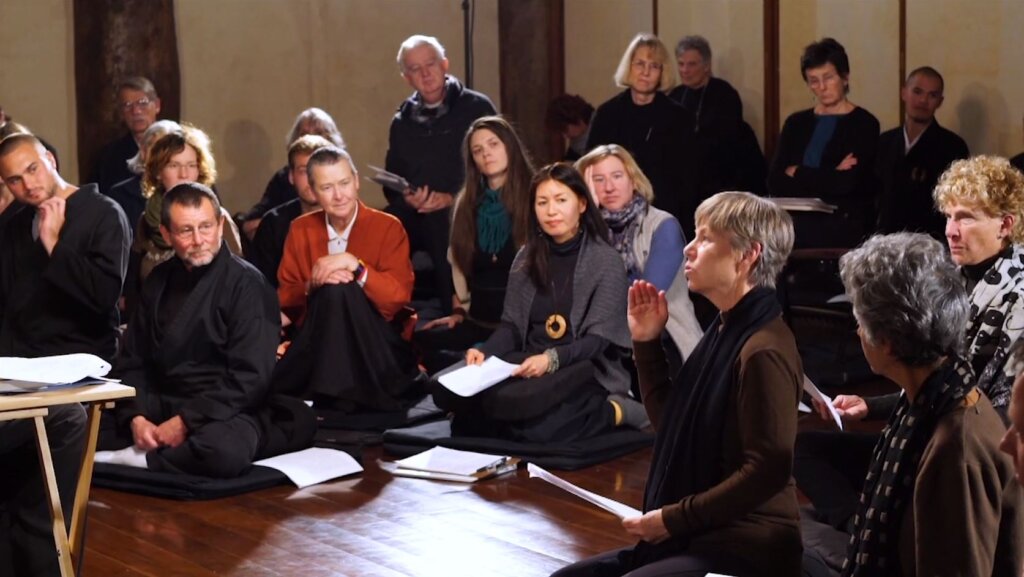
Paperback | Ebook
$21.95 - Paperback
Zen Chants: Thirty-Five Essential Texts with Commentary
A Zen chant is like a compass that sets us in the direction of the awakened life; it is the dynamic, audible counterpart to the silent practice of zazen, or sitting meditation; and it is a powerful expression of the fact that practice happens in community. Here is a concise guide to Zen chants for practitioners, as well as for anyone who appreciates the beauty and profundity of the poetry in dharma. An introduction to the practice is followed by fresh and carefully considered translations and adaptations of thirty-five chants—some common and others less well known—along with illuminating commentary.
The accompanying audio of this book:
On Ryoken, Hanshan, and Soen Nakagawa
Paperback | Ebook
$18.95 - Paperback
Sky Above, Great Wind: The Life and Poetry of Zen Master Ryokan
Ryokan (1758–1831) is, along with Dogen and Hakuin, one of the three giants of Zen in Japan. But unlike his two renowned colleagues, Ryokan was a societal dropout, living mostly as a hermit and a beggar. He was never head of a monastery or temple. He liked playing with children. He had no dharma heir. Even so, people recognized the depth of his realization, and he was sought out by people of all walks of life for the teaching to be experienced in just being around him. His poetry and art were wildly popular even in his lifetime. He is now regarded as one of the greatest poets of the Edo Period, along with Basho, Buson, and Issa. He was also a master artist-calligrapher with a very distinctive style, due mostly to his unique and irrepressible spirit, but also because he was so poor he didn’t usually have materials: his distinctive thin line was due to the fact that he often used twigs rather than the brushes he couldn’t afford. He was said to practice his brushwork with his fingers in the air when he didn’t have any paper. There are hilarious stories about how people tried to trick him into doing art for them, and about how he frustrated their attempts. As an old man, he fell in love with a young Zen nun who also became his student. His affection for her colors the mature poems of his late period. This collection contains more than 140 of Ryokan’s poems, with selections of his art, and of the very funny anecdotes about him.
The Complete Cold Mountain: Poems of the Legendary Hermit Hanshan
Kaz translated this complete set of Hanshan's poems with Peter Levitt.
Welcome to the magical, windswept world of Cold Mountain. These poems from the literary riches of China have long been celebrated by cultures of both East and West—and continue to be revered as among the most inspiring and enduring works of poetry worldwide. This groundbreaking new translation presents the full corpus of poetry traditionally associated with Hanshan (“Cold Mountain”) and sheds light on its origins and authorship like never before. Kazuaki Tanahashi and Peter Levitt honor the contemplative Buddhist elements of this classic collection of poems while revealing Hanshan’s famously jubilant humor, deep love of solitude in nature, and overwhelming warmth of heart. In addition, this translation features the full Chinese text of the original poems and a wealth of fascinating supplements, including traditional historical records, an in-depth study of the Cold Mountain poets (here presented as three distinct authors), and more.
Endless Vow: The Zen Path of Soen Nakagawa
Endless Vow is the first English-language collection of the literary works of Soen Nakagawa Roshi. An intimate, in-depth portrait of the master of Eido Tai Shimano, his Dharma heir, introduces the poems, letters, journal entries, and other writings of Soen Roshi, which are illustrated with his calligraphies. In a postscript, some of his best-known American students—including Peter Matthiessen and Ruth McCandless—reminisce about this legendary figure of American Buddhist history.
Here is what Kaz has to say about the book,
Zen Master Soen Nakagawa was a key figure in the transmission of Zen Buddhism from Japan to the Western world. As abbot of the historic Ryutaku Monastery, he trained monks and lay practitioners. Among them were Robert Aitken and Philip Kapleau, who later became two of the first Westerners to teach Zen in the United States. Soen Roshi had a major impact upon Paul Reps, Maurine Stuart, Peter Matthiessen, Louis Nordstrom, Charlotte Joko Beck, and a great number of other Westerners whom he taught in and outside of Japan.
Soen Nakagawa was also an extraordinary poet. In Japan his haiku are renowned, even though no substantial collection of his work has been made available to the general public. Because he did not wish his anthologies to receive wide circulation in his lifetime, all four collections of his poems were published privately, in limited editions, for small circles of readers.
We have selected materials for this book largely from those four collections: Shigan (Coffin of Poems), 1936; Meihen (Life Anthology), 1949; Henkairoku (Journal of a Wide World) with Koun-sho (Ancient Cloud Selection), 1981; and Hokoju (Long Lasting Dharma Light), published posthumously in 1985. These selections are now presented in English for the first time.
On Art, Calligraphy, and Haiku
Paperback | Ebook
$21.95 - Paperback
“Awakening,” says Kaz, “is to realize the infinite value of each moment of your own life as well as of other beings, then to continue to act accordingly.” This book is the record of a life spent acting accordingly: through his prose, poetry, letters, lyrics, and art, Tanahashi provides an inspirational account of a what it’s been like to work for peace and justice, from his childhood in Japan to the present day. Included are fascinating vignettes of the seminal figures who refined his views—among them Daniel Ellsberg, Gary Snyder, Mayumi Oda, and Morihei Ueshiba, the founder of Aikido—as well as striking examples of the art he has so famously used to bear witness to the infinite value of life.
It is such a wonderful that shows so many facets of his activism, generosity, commitment to peace, art, poetry, creativity and more. It is incredible to hear about his training with Morihei Ueshiba, the role his father played in the military leading up to the war and the impact these had on Kaz. It is sure to leave you with a deep appreciation of his work in all its variety.
Paperback
$39.95 - Paperback
This comprehensive and accessible introduction to the history and art of calligraphy as it’s been practiced for centuries in Asia offers the possibility of appreciating it in a hands-on way. It works as a guide for the beginner hoping to develop an appreciation for Asian calligraphy, for the person who wants to give calligraphy-creation a try, as well as for the expert or afficionado who wants nothing more than to exult in lovely examples of this art. After proving a brief overview, Kazuaki Tanahashi invites you to give it a try yourself, giving guidance for materials, and then instruction in the basic strokes. He then provides examples of 150 characters, from action to zen, with history and development of each, famous examples, stroke sequences, and the author’s interpretation of the character in styles that range from traditional to modern. It’s a calligraphy course in a book, but it’s also a book for hours of meditative browsing.
O'Leary describes it this:
The One Thousand Character Essay is both essay and visual art. For brush calligraphers who do not read Chinese, this text offers a rare opportunity (by looking at the bottom of the facing left-hand page for translation and then reading a column of characters on the right-hand page), to take in the visual aspects of a larger meaning, of several characters in a row. To compare, side by side and over and over, formal and cursive script. Then glance back again to the top of the left-hand page, for the specific
meaning of a particular character. For me, this was entering a calligraphic text as I never had before.In recent years, some calligraphers have been taking cellphone photos of individual characters and then enlarging them on the phone screen to be able to study the detail of strokes and how the calligrapher formed them. It is mesmerizing to look so closely at Zhiyong’s art. This form of attention can seem to slow down time, and it feels like an opportunity for carefully observing that only museum conservators could have had until very recently. We encourage you to try this.
Kaz once said to me, “I believe in the power of writing. I believe in the power of art.” You hold in your hands the written art of space and time. Of black night sky and earth. Ochre earth.
In this online workshop, you can study with him up close, as he guides you in exploring the wondrous world of brush calligraphy.
In each of the eight workshop sessions, Kaz will guide you in making a close study of an ancient Chinese masterpiece. He will demonstrate the character himself and then comment on the work of several of his calligraphy friends to help you deepen your understanding. He ends each session with homework designed to help you cultivate your own calligraphy practice.
You don’t need to have any previous experience of calligraphy or know any East Asian language to take this course. It takes years of practice to be a good calligrapher, but in this workshop and through Kaz’s unique style of teaching, you will experience both a beginning and, at the same time, an advanced study of East Asian calligraphy.
Paperback
$24.95 - Paperback
In this translation collaboration between Kaz and Susan O'Leary, The Thousand Character Essay is China’s most widely used and beloved calligraphy textbook—sung to infants as a lullaby, used to teach reading and writing, employed as library index codes, and more. Composed by the literary giant Zhou Xingsi and handwritten by sixth-century Buddhist monk Zhiyong, this masterful work has endured for centuries as the standard guide for brush writing both in formal and cursive scripts. Delight in One Thousand Characters brings this sublime body of art-as-text to English-speaking readers, detailing the fascinating history, geographic range, and aesthetic nuance of the essay. Preserving the renowned beauty of Zhiyong’s only extant handwriting, the book includes a full one-hundred-strip edition of his calligraphy and offers corresponding commentary explaining the meaning of each character.
O'Leary describes it this:
The One Thousand Character Essay is both essay and visual art. For brush calligraphers who do not read Chinese, this text offers a rare opportunity (by looking at the bottom of the facing left-hand page for translation and then reading a column of characters on the right-hand page), to take in the visual aspects of a larger meaning, of several characters in a row. To compare, side by side and over and over, formal and cursive script. Then glance back again to the top of the left-hand page, for the specific
meaning of a particular character. For me, this was entering a calligraphic text as I never had before.In recent years, some calligraphers have been taking cellphone photos of individual characters and then enlarging them on the phone screen to be able to study the detail of strokes and how the calligrapher formed them. It is mesmerizing to look so closely at Zhiyong’s art. This form of attention can seem to slow down time, and it feels like an opportunity for carefully observing that only museum conservators could have had until very recently. We encourage you to try this.
Kaz once said to me, “I believe in the power of writing. I believe in the power of art.” You hold in your hands the written art of space and time. Of black night sky and earth. Ochre earth.
Paperback | Ebook
$16.95 - Paperback
A White Tea Bowl: 100 Haiku from 100 Years of Life
Kaz edited A White Tea Bowl, a selection of 100 haiku written by Mitsu Suzuki, the widow of Shunryu Suzuki Roshi, which was published in celebration of her 100th birthday. The compelling introduction by Zen priest Norman Fischer describes the profound impact on her life and work of war in Japan and social upheaval in America.
Part I: 100 Haiku presents a kaleidoscope of poems by Mitsu Suzuki that touch all aspects of her being: her dedication to the Buddha way, the loneliness of a widow's life, her generational role as "Candy Auntie," her sensitive attunement to nature, and her moments of insight into the dharma. The more you read these haiku, the more their wisdom will emerge.
Part II: Pickles and Tea contains reminiscences and anecdotes about Mitsu Suzuki by those who lived and studied with her at the San Francisco Zen Center; often these meetings took place in Mitsu's kitchen where she provided countless cups of tea, cookies, and homemade pickles as well as sage advice.
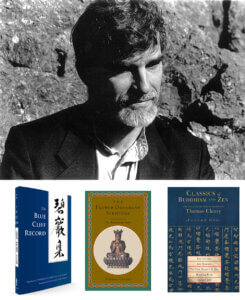
The Buddhist Translations of Thomas Cleary: A Reader’s Guide
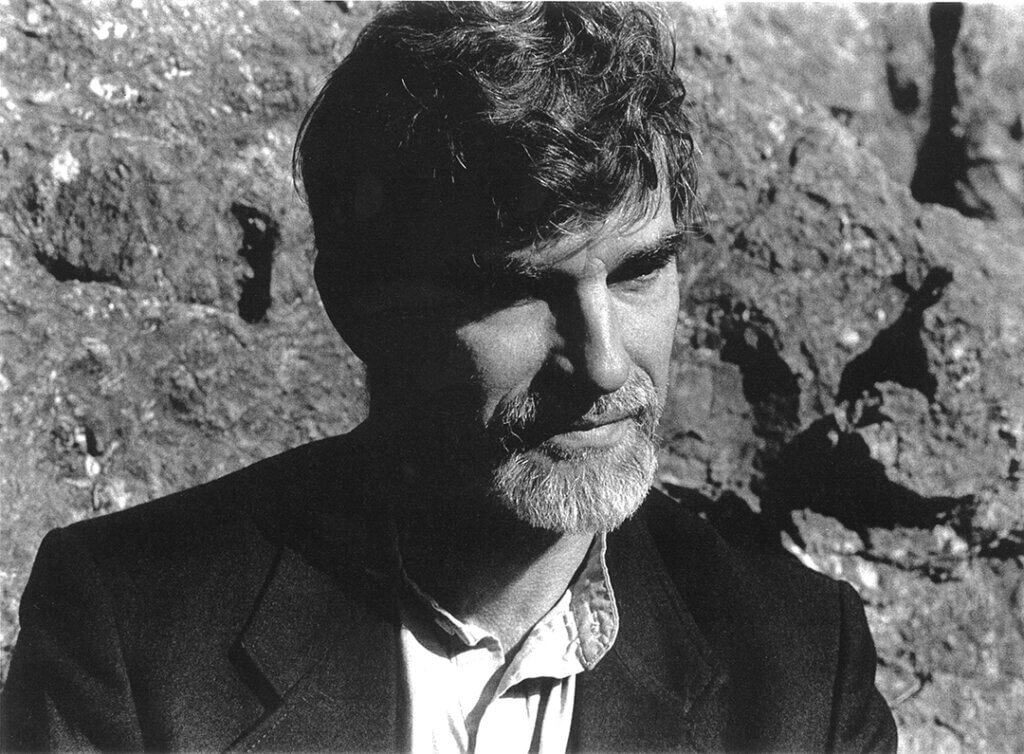
Thomas Cleary (1949—2021) was one of the twentieth century’s greatest translators of Asian classics. He was extremely prolific, translating and authoring countless works. Shambhala Publications has published over sixty. His books have sold millions of copies and his translations have in turn been translated into over twenty languages worldwide. His first published project, in collaboration with his brother J.C. Cleary, was the classic Blue Cliff Record, that great collection of koans.
Buddhism was a large part of his translations, with over thirty works spanning the traditions of Chan, Zen, and Soen while also including Tiantai, Indian Tantra, Theravada, and Hua-yen, and Bushido. Arguably his magnum opus is the 1,600+ page Flower Ornament Scripture, a masterpiece of translation from one of the most influential works of Mahayana literature. In Lion's Roar magazine, Taigen Dan Leighton describes it as "a samadhi text, designed to inspire luminous visions and exalted experiences of mind and reality through its use of lush, psychedelic, evocative imagery."
Below is a guide to Cleary’s Buddhist works published by Shambhala Publications. We hope you enjoy it and benefit from Cleary’s lifetime of dedication to these texts and the figures behind them.
We also are editing another Buddhist translation of Thomas’s that will be published in 2022.
Jump To: Chan | Zen | Pan-Tradition | Theravada, Buddhist I Ching, Yogacara, Hua-Yen, Tantra
Thomas Cleary Reader Guides
Buddhism | Taoism | Art of War, Strategy, & Martial Arts | I Ching | Greek Wisdom, Sufism & Islam
Buddhism
Chan Buddhism in China
Robert Thurman said the following about Thomas Cleary in Tricycle Magazine:
There is no doubt in my mind that Thomas Cleary is the greatest translator of Buddhist texts from Chinese or Japanese into English of our generation, and that he will be so known by grateful Buddhist practitioners and scholars in future centuries. Single-handedly he has gone a long way toward building the beginnings of a Buddhist canon in English.
So we begin with Cleary’s works on Buddhism.
The Final Translation of Thomas Cleary
Cleary passed away after completing final edits on one of the most important but previously untrnslated collections by Dahui.
Treasury of the Eye of True Teaching: Classic Stories, Discourses, and Poems of the Chan Tradition
by Dahui
Chan master Dahui’s monumental compilation of teachings is brought to life for the first time in English
The Treasury of the Eye of True Teaching (Chinese Zhengfayanzang) stands among the greatest classics of Chan Buddhism—the Zen tradition of China—combining speeches, stories, dialogues, poems, and commentaries that the acclaimed Chinese master Dahui (1089–1163) extracted from Chan lore. Compiled during the Song Dynasty by Dahui’s disciples, this work is replete with the enigmatic, paradoxical wisdom for which this influential Buddhist tradition is so well known.
Famous for his challenging methodology and vigorous efforts to eliminate attachment to both conventional thinking and the grasping of the ego, Dahui here focuses on the teaching of “great doubt.” By grappling with “great doubt,” Dahui demonstrates how practitioners are able to push themselves to the limits of ideas and concepts until a breakthrough to enlightenment is achieved.
A fascinating compendium of literary and spiritual puzzles, Treasury of the Eye of True Teaching challenges and inspires its readers to examine their ingrained mental habits and attachments—and to discover their inborn potential for an immediate and direct experience of reality.
The Blue Cliff Record
The Blue Cliff Record is a translation of the Pi Yen Lu, a collection of one hundred famous Zen koans accompanied by commentaries and verses from the teachings of Chinese Zen masters. Compiled in the twelfth century, it is considered one of the great treasures of Zen literature and an essential study manual for students of Zen. Also see Cleary’s translation of important Japanese commentaries on this text, Secrets of the Blue Cliff Record, below.
Book of Serenity: One Hundred Zen Dialogues
The Book of Serenity is a translation of Shoyo Roku, a collection of one hundred Zen koans with commentaries that stands as a companion to the other great Chinese koan collection, The Blue Cliff Record (Pi Yen Lu). A classic of Chan (Chinese Zen) Buddhism, Book of Serenity has been skillfully rendered into English by the renowned translator Thomas Cleary.
Compiled in China in the twelfth century, the Book of Serenity is, in the words of Zen teacher Tenshin Reb Anderson, "an auspicious peak in the mountain range of Zen literature, a subtle flowing stream in the deep valleys of our teaching, a treasure house of inspiration and guidance in studying the ocean of Buddhist teachings." Each one of its one hundred chapters begins with an introduction, along with a main case, or koan, taken from Zen lore or Buddhist scripture. This is followed by commentary on the main case, verses inspired by it, and, finally, further commentary on all of these. The book contains a glossary of Zen/Chan terms and metaphors.
The Five Houses of Zen
For all its emphasis on the direct experience of insight without reliance on the products of the intellect, the Zen tradition has created a huge body of writings. Of this literature, the writings associated with the so-called Five Houses of Zen which all arose in the Tang, are widely considered to be preeminent. These Five Houses were not schools or sects but styles of Zen teaching represented by some of the most outstanding masters in Zen history. The writings of these great Zen teachers are presented here and include:
- The sayings of Pai-chang, famous for his Zen dictum “A day without work, a day without food”
- Selections from Kuei-shan’s collection of Zen admonitions, considered essential reading by numerous Buddhist teachers
- Sun-chi’s unique discussion of the inner meaning of the circular symbol in Zen teaching
- Sayings of Huang-po from The Essential Method of Transmission of Mind
- Excerpts from The Record of Lin-chi, a great classical text of Zen literature
- Ts’ao-shan’s presentation of the famous teaching device known as the Five Ranks
- Selections of poetry from the Cascade Collection by Hsueh-tou, renowned for his poetic commentaries on the classic Blue Cliff Record
- Yung-ming’s teachings on how to balance the two basic aspects of meditation: concentration and insight
Instant Zen
This is included in Classics of Buddhism and Zen, Volume One.
Instant Zen presents the teachings of Foyan Qingyuan (1067–1120), a disciple of Wuzu Fayan, which offer simple exercises in attention and thought designed to lead to insight into the real nature of self.
Sleepless Nights: Verses for the Wakeful
Sleepless Nights: Verses for the Wakeful, one of the greatest masterpieces of the secular Buddhist poetry. Its verses mock the folly of tyrants and celebrate the indomitability of life.
This is included in Volume Four of the Classics of Buddhism and Zen.
Nearly 800 years ago, Mongol tribes from the Central Asian steppes swept into China. Through this upheaval, Wen-siang, a solitary buddhist poet, and a political outcast traveled throughout in his own homeland.Hi poetry captures the suffering of his era with remarkable sensitivity and beauty.
Stopping and Seeing: A Comprehensive Course in Buddhist Meditation
by Chih-i
"Stopping" and "seeing" are sometimes referred to as the yin and yang of Buddhist meditation—complementary twin halves of a unified whole. In essence, "stopping and seeing" refers to stopping delusion and seeing truth, processes back to basic Buddhist practice. One of the most comprehensive manuals written on these two essential points of Buddhist meditation is "The Great Stopping and Seeing," a monumental work written by sixth-century Buddhist master Chih-i. Stopping and Seeing, the first translation of this essential text, covers the principles and methods of a wide variety of Buddhist meditation techniques and provides an in-depth presentation of the dynamics of these practices.
The Sutra of Hui-neng, Grand Master of Zen: With Hui-neng's Commentary on the Diamond Sutra
Translated by Thomas Cleary
Hui-neng (638–713) is perhaps the most beloved and respected figure in Zen Buddhism. An illiterate woodcutter who attained enlightenment in a flash, he became the Sixth Patriarch of Chinese Zen, and is regarded as the founder of the "Sudden Enlightenment" school. He is the supreme exemplar of the fact that neither education nor social background has any bearing on the attainment of enlightenment. This collection of his talks, also known as the Platform or Altar Sutra, is the only Zen record of its kind to be generally honored with the appellation sutra, or scripture.
The Sutra of Hui-neng is here accompanied by Hui-neng's verse-by-verse commentary on the Diamond Sutra—in its very first published English translation ever.
Teachings of Zen
Though the teachings of the first Zen masters are sometimes considered innovation, they were actually a return to the core of Buddhist teaching and to an understanding of the importance of the personal experience of enlightenment. This anthology presents talks, sayings, and records of heart-to-heart encounters to show the essence of Zen teaching through the words of the Zen masters themselves. The selections have been made from the voluminous Zen canon for their accessibility, their clarity, and above all their practical effectiveness in fostering insight.
Unlocking the Zen Koan
Unlocking the Zen Koan is a translation of the koan classic Wumenguan and also includes Cleary's selection of comments by great Chinese Zen masters.
Zen and the Art of Insight
The Prajnaparamita ("perfection of wisdom") sutras are one of the great legacies of Mahayana Buddhism, giving eloquent expression to some of that school's central concerns: the perception of shunyata, the essential emptiness of all phenomena; and the ideal of the bodhisattva, one who postpones his or her own enlightenment in order to work for the salvation of all beings.
The Prajnaparamita literature consists of a number of texts composed in Buddhist India between 100 BCE and 100 CE. Originally written in Sanskrit, but surviving today mostly in their Chinese versions, the texts are concerned with the experience of profound insight that cannot be conveyed by concepts or in intellectual terms. The material remains important today in Mahayana Buddhism and Zen.
This work includes two Song Dynasty contributions:
Key selections from the Prajnaparamita literature are presented here, along with Thomas Cleary's illuminating commentary, as a means of demonstrating the intrinsic limitations of discursive thought, and of pointing to the profound wisdom that lies beyond it.
This work includes two important works that were translated or written during the Song and appear with Thomas Cleary's commentary.
- The Scripture on Perfect Insight Awakening to Essence, translated into Chinese by Weijing of the Song dynasty (960–1279). Either a retranslation of the original or a reworking of an older translation, this text contains some useful nonstandard terminology and adroitly connects the Prajnaparamita and Yogachara teachings of Buddhism
- Key Teachings of the Great Scripture on Perfect Insight is a systematic reduction of Xuanzang’s gigantic six-hundred-scroll Chinese translation of the scripture, made by Dayin of the Song dynasty.
Zen Essence: The Science of Freedom
Drawn from the records of Chan masters of the Tang and Song dynasties, this collection may surprise some readers.
Contributors include the Chan masters Mazu, Hadhi, Linji, Yangshan, Fayan, Fenyang, Xuedou, Huanglong, Yangqi, Wuzu, Yuanwu, Foyan, Dahui, Hongzhi, Ying-an, Mi-an, Xiatang, and Yuansou,
In contrast to the popular image of Zen as an authoritarian, monastic tradition deeply rooted in Asian culture, these passages portray Zen as remarkably flexible, adaptive to contemporary and individual needs, and transcending cultural boundaries.
The readings contained in Zen Essence emphasize that the practice of Zen requires consciousness alone and does not depend on a background in Zen Buddhism and Asian culture. The true essence of Zen resides in the relationship between mind and culture, whatever that culture might be. This unique collection of writings creates a picture of Zen not as a religion or philosophy, but as a practical science of freedom.
Further teachings of some of these masters, especially the earlier ones, are recorded in the translation and appendices of The Blue Cliff Record.
Zen Lessons: The Art of Leadership
The author of this work, Dahui Zonggao (1089–1163) had a different take on Silent Illumination which is described in The Circle of the Way and is also covered by Guo Gu in this video.
This guide to enlightened conduct for people in positions of authority is based on the teachings of several great Chinese Zen masters. Drawing on private records, letters, and long-lost documents of the Song dynasty (tenth to thirteenth centuries), Zen Lessons consists of short excerpts written in language that is accessible to the reader without any background in Eastern philosophy. This book serves as a guide to recognizing the qualities of a genuine Zen teacher; it also serves as a study of the character and conduct necessary for the mastery of any position of power and authority—whether religious, social, political, or organizational.
In the original Chinese, Zen Lessons is entitled Chanlin baoxun, or Chanmen baoxun, ‘‘Precious Lessons from the Chan (Zen) Schools.’’ It was originally compiled in the early twelfth century by two outstanding Chinese Zen masters, Miaoxi (better known as Dahui) and Zhu-an. In the late twelfth century it was further expanded by a Zen master named Jingshan, into the form in which the text exists today. Several commentaries on the text were written in China over the next five hundred years. It was first published in Japan in 1279, about one hundred years after its recompilation. Zen Lessons draws on the personal teachings of great Zen masters of the early Song dynasty, many from unusual sources, difficult to obtain or no longer extant, often originally available only through direct contact with the network of Chinese Zen schools. Some selections are not attributed to any written source and may have been written by one or another of the compilers, based on material derived from current oral tradition. Affording rare glimpses of the personalities of distinguished masters, Zen Lessons preserves a large body of special Zen lore that would otherwise have been lost to posterity.
Zen Letters: Teachings of Yuanwu
This book collects the letters of the primary author of the Blue Cliff Record, Yuanwu (1063–1135).
Zen Letters presents the teachings of this great Chinese master highlighted in The Circle of the Way as the author of the annotations and commentary in the Blue Cliff Record. In this book, his letters transmit direct, person-to-person lessons, intimately revealing the inner workings of the psychology of enlightenment. These teachings are drawn from letters written by Yuanwu to various fellow teachers, disciples, and lay students—to women as well as men, to people with families and worldly careers as well as monks and nuns, to advanced adepts as well as beginning students. His letters, here in English for the first time, are among the great treasures of Zen literature.
This is also included in Classics of Buddhism and Zen, Volume II.
Thomas Cleary’s Works on Japanese Zen
Dream Conversations: On Buddhism and Zen
Dream Conversations is a collection of a renowned Japanese master's written replies to questions about the true nature of Zen. In short, simply worded teachings, Muso Kokushi (1275–1351), also known as Muso Soseki, exposes common misconceptions with unprecedented clarity, offering psychological insights designed to lead the reader into the depths of authentic Zen experience. These incisive teachings will be especially valuable for today's Zen students, as they struggle with their own confusion and misunderstandings about the true path of Zen.
This is also included in Classics of Buddhism and Zen, Volume III.
Original Face: An Anthology of Rinzai Zen
A collection of Japanese Rinzai Zen wisdom, from the thirteenth to the eighteenth centuries. This is included in Volume four of Classics of Buddhism and Zen.
Rational Zen: The Mind of Dogen Zenji
Rational Zen consists of selections from both the Shobogenzo, Dogen's masterwork which you will read more about below, and the Eihei Koroku, or Universal Book of Eternal Peace which until now has been unavailable in English. The translator Thomas Cleary also provides explanations of the inner meanings of Dogen's writings and sayings—the first commentaries of their kind of English. A compendium of authentic source materials further enhances the reader's insight into Dogen's methods, linking them to the great classical traditions of Buddhism that ultimately flowered in Zen.
The Eihei Koroku mentioned above is comprised of instructions to his monks, informal talks, and the famous Instructions to the Cook or Tenzo Kyokun.
Record of Things Heard: From the Treasury of the Eye of the True Teaching, Ejo's Shobogenzo Zuimonki
This Zen classic is a collection of talks Dogen, the founder of the Soto School. They were recorded by Ejo, one of Dogen's first disciples, and later his foremost successor. The talks and stories in this volume were written in the thirteenth-century Japan, a time when Buddhism was undergoing a "dark age" of misinterpretation and corruption. It was in this atmosphere that Dogen attempted to reassert the true essence of the Buddhist teachings and to affirm "the mind of the Way" and the doctrine of selflessness. Dogen emphasizes the disciplinary aspect of Zen: meditation practice is presented here as the backbone without which Buddhism could not exist.
The stories in this volume are often humorous and paradoxical, relating the Buddhist teachings by means of example. Commonly in the Zen tradition, discussions between teacher and student and the telling of tales are used to point to a greater truth, which mere theory could never explain.
Dogen relates interesting stories of his travels in China, where the inspiration he found lacking in Japanese Buddhism was flourishing in the Ch'an school of Chinese Buddhism.
Secrets of the Blue Cliff Record: Zen Comments by Hakuin and Tenkei
Secrets of the Blue Cliff Record is a fresh translation featuring newly translated commentary from two of the greatest Zen masters of early modern Japan, Hakuin Ekaku (1685–1768) of the Rinzai sect of Zen and Tenkei Denson (1648–1735) of the Soto sect of Zen. This translation and commentary on The Blue Cliff Record sheds new light on the meaning of this central Zen text
Timeless Spring: A Soto Zen Anthology
Included in volume four of The Classics of Buddhism and Zen, Timeless Spring which contains sayings, informal talks, and public cases of important Soto Zen masters.
Transmission of Light: Zen in the Art of Enlightenment
A translation of the classic Denkoroku by Thomas Cleary illustrates how to arrive at the epiphanic Zen awakening known as satori.
The essential initiatory experience of Zen, satori is believed to open up the direct perception of things as they are. "Even if you sit until your seat breaks through, even if you persevere mindless of fatigue, even if you are a person of lofty deeds and pure behavior, if you haven't reached this realm of satori, you still can't get out of the prison of the world." Deliberately cultivated and employed to awaken the dormant potency of the mind, satori is said to be accessible to all people, transcending time, history, culture, race, gender, and personality.
Attributed to the thirteenth-century Zen Master Keizan (1268–1325), Transmission of Light is one of three essential koan texts used by Zen students. Techniques for reaching the enlightening experience of satori are revealed through fifty-three short tales about the awakenings of successive generations of masters, beginning with the twelfth-century Zen master Ejo, dharma heir to Dogen.
The translator's introduction establishes the context for Transmission of Light within the Zen canon and elucidates central themes of the work, including the essential idea that genuine satori "is not the end of Zen; it is more properly the true beginning."
The Undying Lamp of Zen: The Testament of Zen Master Torei
For a traditional account, Thomas Cleary's translation of The Undying Lamp of Zen: The Testament of Zen Master Torei is an invaluable resource.
This is a complete explanation of Zen practice written by one of the most eminent masters of pre-modern Japan. The author, Torei Enji (1721–1792), was best known as one of two “genius assistants” to Hakuin Ekaku, who was himself a towering figure in Zen Buddhism who revitalized the Rinzai school. Torei was responsible for much of the advanced work of Hakuin’s later disciples and also helped systemize Hakuin’s teachings. The Undying Lamp of Zen includes a range of principles and practices, from the most elementary to the most advanced. It is an indispensable aid to the practice of Rinzai Zen, and provides an accessible entrée to the Zen experience in general. Torei is a compelling guide; his tone is energetic, no-nonsense, and full of personality.
Zen Antics: One Hundred Stories of Enlightenment
Throughout Zen history, stories and anecdotes of Zen masters and their students have been used as teaching devices to exemplify the enlightened spirit. Unlike many of the baffling dialogues between Zen masters preserved in the koan literature, the stories retold here are penetratingly simple but with a richness and subtlety that make them worth reading again and again. This collection includes more than one hundred such stories—many appearing here in English for the first time—drawn from a wide variety of sources and involving some of the best-known Zen masters, such as Hakuin, Bankei, and Shosan. Also presented are stories and anecdotes involving famous Zen artists and poets, such as Sengai and Basho.
Collections Spanning Chan, Zen, and Soen
The Zen Reader
This compendium of a thousand years of Zen teaching presents the essence of the tradition through stories, sayings, talks, and records of heart-to-heart encounters with Zen masters. The great expositors of the tradition, whose voices are recounted here, encourage us to let go of our clinging and intellectual grasping, and to open ourselves to embrace reality exactly as it is.
Kensho: The Heart of Zen
Kensho is the transformative glimpse of the true nature of all things. It is an experience so crucial in Zen practice that it is sometimes compared to finding an inexhaustible treasure because it reveals the potential that exists in each moment for pure awareness free from the projections of the ego. Among the traditional Zen works are a number of important texts focusing on the profound subtleties of this essential Zen awakening and the methods used in its realization. The selections here include several works by Hakuin, whose teachings emphasize the techniques used in the cultivation and application of kensho and the importance of going beyond the experience itself to apply Zen insight to the full range of human endeavors.
This is also included in Volume Three of Classics of Buddhism and Zen: The Collected Translations of Thomas Cleary.
Tao Te Ching: Zen Teachings on the Taoist Classic
This version of the Tao Te Ching presents the classic in a unique light, through the eyes of a renowned master of the Rinzai Zen tradition. Takuan Soho, who lived from 1573 to 1645, was an acerbic, witty, free spirit; a painter, poet, author, calligrapher, gardener, and a tea master. He was also a confidant and teacher to shoguns and many other powerful and famous figures, among them the famed swordsmen Yagyu Munenori and, according to legend, Miyamoto Musashi.
True to the teachings of the Tao Te Ching itself, as well as to the tradition of Zen, Takuan draws from everyday experience and common sense, to reveal the basic sanity of nature and the inherent wholeness of life. Takuan reveals how the Tao Te Ching applies to a wide range of concerns, including health, personal relationships, and individual lifestyle. He interprets the text through a philosophical and psychological lens, and also elucidates its radical social and political concepts.
Minding Mind: A Course in Basic Meditation
Minding Mind is an extraordinary compendium of instruction manuals dealing primarily with ways of attaining to the mode of experience characteristic of the highest form of meditation in the Zen tradition, pure clear meditation arriving at being-as-is. Among the seven meditation manuals included here are:
The Treatise on the Supreme Vehicle is attributed to Hongren (602–675), who is known as the Fifth Patriarch of Chan Buddhism in China. The method taught in this manual is basic and quintessential in theory and practice, setting the stage for the texts that follow.
Models for Sitting Meditation, was composed by Chan Buddhist Master Cijiao of Changlu in late eleventh-century China. Little is known of Cijiao, except that he was not only a master of the powerful Linji school of Chan Buddhism but also a patriarch of popular Pure Land Buddhism. The combination of Chan and Pure Land Buddhism, especially in the domain of concentration technique, is commonly found in the records of early meditation schools of China, Korea, Japan, Tibet, and Vietnam.
Guidelines for Sitting Meditation was written by Foxin Bencai, a younger contemporary of Cijiao. The instructions of Foxin and Cijiao, both quite brief, address problems of deterioration in the quality of meditation practices and prescribe simple remedies to counteract confusion and misalignment in order to foster the proper state of mind.
A Generally Recommended Mode of Sitting Meditation by Dogen.
One of the main concerns of Dogen’s teaching activity was to alert people to the shortcomings and dangers of incomplete Zen meditation and partial Zen experience. This manual, one of Dogen’s first written works, reflects this concern and outlines an approach to its resolution.
Secrets of Cultivating the Mind was composed by Chinul (1158–1210), founder of the Chogye order of Korean Buddhism. Ordained as a monk at the age of eight, Chinul had no teacher. His first awakening occurred as he read a Chan Buddhist classic when he was twenty-five years old. After that, Chinul went into seclusion in the mountains. Later on, he perused the whole Buddhist canon, then went back into solitude in a mountain fastness. During this period, Chinul experienced another awakening while reading the letters of one of the great Chinese masters. Based on classical teachings, Chinul's Secrets of Cultivating the Mind is a highly accessible primer of basic Buddhist meditation, defining and contrasting the principles and methods of sudden and gradual enlightenment.
Another manual in this collection is Absorption in the Treasury of Light, written by Dogen's main student, Ejo (1198–1282). Born into an ancient noble family, Ejo became a Buddhist monk at the age of eighteen. Reflecting Ejo’s background in the esoteric branch of Tendai Buddhism as well as his classical Zen studies, this work shows how to focus on the so-called Dharmakaya, or Reality Body teaching of Buddhism, underlying a wide variety of symbolic expressions. This type of meditation, using scriptural extracts, poetry, and Zen koans, or teaching stories, to register a specific level of consciousness, is called sanzen. There is a great deal of Zen literature deriving from centuries of sanzen, among which Ejo’s Absorption in the Treasury of Light represents a very unusual blend of complexity and simplicity, depth and accessibility.
An Elementary Talk on Zen is attributed to Man-an, an old adept of a Soto school of Zen who is believed to have lived in the early seventeenth century. Man-an's work is very accessible and extremely interesting for the range of its content. In particular, it reflects a modern trend toward emphasis on meditation in action, which can be seen in China particularly from the eleventh century, in Korea from the twelfth century, and in Japan from the fourteenth century.
Cleary Translations of Hua Yen, Yogacara, Tantra, and Theravada, and the Buddhist I Ching
The Dhammapada: The Sayings of Buddha
The famous collection of 423 verses of Buddhist wisdom that has been profoundly influential in every Buddhist school. Cleary translated this from the Pali.
The Buddhist I Ching
For centuries the I Ching has been used as a basic map of conscious development, containing the underlying principles of all religions, and highly prized by followers of Buddhism. Chih-hsu Ou-i uses the concepts of Tianti Buddhism to elucidate the I Ching—concentration and insight, calmness and wisdom, and various levels of realization. Skillfully translated by Thomas Cleary, this work presents the complete text of the I Ching plus the only Buddhist interpretation of the oracle.
Buddhist Yoga: A Translation of the Sandhinirmochana Sutra
This volume presents a landmark translation of a classical sourcebook of Buddhist yoga, the Sandhinirmochana-sutra, or "Scripture Unlocking the Mysteries," a revered text of the school of Buddhism known as Vijnanavada or Yogachara. The study of this scripture is essential preparation for anyone undertaking meditation exercise. Linking theory and praxis, the scripture offers a remarkably detailed and thorough course of study in both the philosophical and pragmatic foundation of Buddhist yoga, and their perfect, harmonious union in the realization of Buddhist enlightenment.
Hua-yen Buddhism
The Flower Ornament Scripture: A Translation of the Avatamsaka Sutra
Cleary's 1,650 page magnum opus. Known in Chinese as Hua-yen and in Japanese as Kegon-kyo, the Avatamsaka Sutra, or Flower Ornament Scripture, is held in the highest regard and studied by Buddhists of all traditions. Through its structure and symbolism, as well as through its concisely stated principles, it conveys a vast range of Buddhist teachings.
This one-volume edition contains Thomas Cleary's definitive translation of all thirty-nine books of the sutra, along with an introduction, a glossary, and Cleary's translation of Li Tongxuan's seventh-century guide to the final book, the Gandavyuha, "Entry into the Realm of Reality."
Also see Robert Thurman's famous review of this work that is vitally important to the traditions of East Asia and Tibet.
Hua-yen Buddhism
Entry into the Inconceivable: An Introduction to Hua-yen Buddhism
This work, included in Volume Five of the Classics of Buddhism and Zen, is an introduction to the philosophy, meditation, and ethics of Hua-yen Buddhism. one of the cornerstones of East Asian Buddhist thought, as set forth in the works of its great expositors in the golden age of Chinese Buddhism. Cleary presents a survey of the unique Buddhist scripture on which the Hua-yen teaching is based and a brief history of its introduction into China. He also presents a succinct analysis of the essential metaphysics of Hua-yen Buddhism as it developed during China's golden age and full translations of four basic texts by seminal thinkers of the school.
Zen & Indian Buddhist Tantra
The Ecstacy of Enlightenment
The Ecstasy of Enlightenment, included in Volume Two of the Classics of Buddhism and Zen, provides an inside look at the spiritual world of tantra, revealing noteworthy parallels between tantric Buddhism in old Bengal and the original Zen Buddhism of China.
All Books by Thomas Cleary
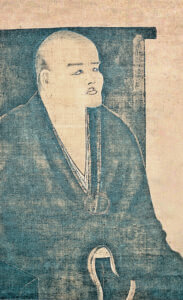

Dogen: A Guide to His Work
This is part of a series of articles on the arc of Zen thought, practice, and history, as presented in The Circle of the Way: A Concise History of Zen from the Buddha to the Modern World. You can start at the beginning of this series or simply explore from here.
Dogen, from the cover of Essential Dogen.
Explore Zen Buddhism: A Reader's Guide to the Great Works
Overview
Chan in China
- The Works of the Chan and Zen Patriarchs
- The Works of Zen in the Tang Dynasty (618-907)
- The Works of Zen in the Song Dynasty (960 - 1279)
- The Great Koan Collections
Zen in Korea
Zen in Japan
> Dogen: A Guide to His Works
- Rinzai Zen
- Hakuin Ekaku: A Reader's Guide
- The Samurai and Zen
- Zen in Japan up to the Meiji Restoration
Additional Resources
- The Heart Sutra: A Reader’s Guide
- Zen in the Modern World (Coming Soon)
- Foundational Sutras and Texts of Zen (Coming Soon)
- Zen and Tea
Dogen (1200–1253) is revered as the founder of the Soto school in Japan, and his influence cannot be overstated. And as mentioned in the previous article, everything changed with him.
The Circle of the Waygives an excellent overview:
Dogen’s oeuvre would be a remarkable achievement just as literature, for its lyric beauty, or as philosophy, for its presentation of Buddhist teachings. But Dogen’s Zen is the Zen of practice, and its deepest value is found in its illumination of the unity of practice and enlightenment.
Shambhala Publications has multiple works by and on Dogen: translations, commentaries, and later commentaries on his output.
Dogen: Japan’s Original Zen Teacher
Although Dogen’s writings have reached wide prominence among contemporary Buddhists and philosophers, there is much that remains enigmatic about his life and writings. In Dogen: Japan’s Original Zen Teacher, respected Dogen scholar and translator Steven Heine offers a nuanced portrait of the master’s historical context, life, and literary output, paying special attention to issues such as:
- The nature of the “great doubt” that motivated Dogen’s religious quest
- The sociopolitical turmoil of Kamakura Japan that led to dynamic innovations in medieval Japanese Buddhism
- The challenges and transformations Dogen experienced during his pivotal time in China
- Key inflection points and unresolved questions regarding Dogen’s teaching career in Japan
- Ongoing controversies in the scholarly interpretations of Dogen’s biography and teachings
Synthesizing a lifetime of research and reflection into an accessible narrative, this new addition to the Lives of the Masters series illuminates thought-provoking perspectives on Dogen’s character and teachings, as well as his relevance to contemporary practitioners.
The Essential Dogen: Writings of the Great Zen Master
This is an excellent place to start: the first book to offer the great master’s incisive wisdom in short selections taken from the whole range of his voluminous works. The pithy and powerful readings, arranged according to theme, provide a perfect introduction to Dogen—and inspire spiritual practice in people of all traditions.
Beyond Thinking: A Guide to Zen Meditation
Kaz Tanahashi translated and edited this collection of Dogen's works on zazen meditation along with Mel Weitsman, Blanche Hartman, Michael Wenger, Norman Fischer, Katherine Thanas, Reb Anderson, and others.
It has many fasciles from the Shōbō Genzō as well as some others including:
- ‘‘Recommending Zazen to All People’’, the ‘‘Fukanzazengi," one of the most revered texts in the Soto School, as it summarizes Dogen’s intention for establishing the Zen teaching in Japan.
- ‘‘On the Endeavor of the Way," or ‘‘Bendowa.’’ highly revered in the Soto School, as it is the most comprehensive elucidation of dharma throughout Dogen’s teaching career.
Rational Zen: The Mind of Dogen Zenji
Rational Zen consists of selections from both the Shobogenzo, Dogen's masterwork which you will read about more below, and the Eihei Koroku, or Universal Book of Eternal Peace which until now has been unavailable in English. The translator Thomas Cleary also provides explanations of the inner meanings of Dogen's writings and sayings—the first commentaries of their kind of English. A compendium of authentic source materials further enhances the reader's insight into Dogen's methods, linking them to the great classical traditions of Buddhism that ultimately flowered in Zen.
The Eihei Koroku mentioned above is comprised of instructions to his monks, informal talks, and the famous Instructions to the Cook or Tenzo Kyokun.
The Tenzo Kyokun, Instructions to the Cook
The Circle of the Way gives an excellent overview of Instructions to the cook, the Tenzo Kyokun, which he wrote in 1237:
While Dogen was still living on the docked ship—it seems he had nowhere else to go—an elderly monk from Ayuwang Monastery, where Dahui Zonggao once taught, boarded in search of Japanese mushrooms. Dogen offered him some tea. The old man talked about his life as a monk and his position as cook at Ayuwang. He had walked thirty-four or thirty-five li (about ten miles), he said, hoping to find Japanese mushrooms—a delicacy—to put into a noodle soup.
The conversations he had with this cook became a formative teaching for Dogen.
The work, The Circle of the Way continues,
is literally a job description for a temple cook. . . . Dogen described cooking as a sacred activity. He advised the cook to handle pots and spoons with reverence and treat each grain of rice with as much care and attention as if it were his own eyeball. “Taking up a vegetable leaf manifests the Buddha’s sixteen-foot golden body,” he wrote. "Take up the sixteen-foot golden body and reveal it as a vegetable leaf. This is the power of functioning freely as the awakening activity which benefits all beings."
How to Cook Your Life: From the Zen Kitchen to Enlightenment
This is a translation of this text, along with a commentary by the Kyoto-based Soto priest Kosho Uchiyama Roshi (1912–1998).
In drawing parallels between preparing meals for the Zen monastery and spiritual training, he reveals far more than simply the rules and manners of the Zen kitchen; he teaches us how to "cook," or refine our lives. In this volume, Uchiyama Roshi undertakes the task of elucidating Dogen's text for the benefit of modern-day readers of Zen. Taken together, his translation and commentary truly constitute a "cookbook for life," one that shows us how to live with an unbiased mind in the midst of our workaday world.
Instructions to the Cook: A Zen Master's Lessons in Living a Life that Matters
An even more contemporary take on this work is Instructions to the Cook: A Zen Master's Lessons in Living a Life That Matters from Bernie Glassman and Rick Fields.
Instructions to the Cook describes the innovative business model Roshi Bernie Glassman developed to revitalize a poverty-stricken section of Yonkers, New York. Using his own story as a base, Glassman shows how social engagement can be used as a spiritual practice to promote both personal and societal transformation.
The Shōbō Genzō: The Treasury of the True Dharma Eye
Undoubtedly Dogen's magnum opus, this a collection of sermons he gave over many years on a wide range of subjects. The works below include the full translation, works that are commentaries on sections of it, or anthologies that include parts of it.
Note that there are several other titles with "Shōbō Genzō" but which are distinct works. The main work discussed in this section is sometimes differentiated from the others by calling it Kana Shōbō Genzō.
Treasury of the True Dharma Eye: Zen Master Dogen's Shobo Genzo
Dogen's collection of essays that form the Treasury of the True Dharma Eye (Shōbō Genzō, in Japanese) is a monumental work, considered to be one of the profoundest expressions of Zen wisdom ever put on paper, and also the most outstanding literary and philosophical work of Japan. Kazuaki Tanahashi and a team of translators that represent a Who’s Who of American Zen have produced a translation of the great work that combines accuracy with a deep understanding of Dogen’s voice and literary gifts.
This volume includes a wealth of materials to aid understanding, including maps, lineage charts, a bibliography, and an exhaustive glossary of names and terms—and, as a bonus, the most renowned of all Dogen’s essays, “Recommending Zazen to All People.”
"A vast, beautiful translation of the master work of the Japanese genius Dogen Zenji. English-speaking practitioners will be indebted to Kaz Tanahashi and his associates for this truly magnificent teaching, an indispensable contribution to Zen letters." —Peter Matthiessen (Muryo Roshi)
"A deeply considered and deeply relevant text. Shambhala’s publication of Kazuaki Tanahashi’s translation of the complete text of Eihei Dogen’s Shōbō Genzō marks a watershed moment for Western Buddhism. With the Tanahashi version, it appears we now have an edition that will receive the sort of attention this great work deserves. Tanahashi’s effort to preserve the particular Japanese difficulty of Dogen’s poetic prose, aided by the excellent work of the poet and Zen teacher Peter Levitt, emphasizes the text’s ambiguity, multiplicity, and resonance of meaning more effectively than other versions." —Norman Fischer, Tricycle
Each Moment Is the Universe: Zen and the Way of Being Time
It's easy to regard time as a commodity—we even speak of “saving” or “spending” it. We often regard it as an enemy, when we feel it slipping away before we’re ready for time to be up. The Zen view of time is radically different than that: time is not something separate from our life; rather, our life is time. Understand this, says Dainin Katagiri Roshi, and you can live fully and freely right where you are in each moment.
Katagiri bases his teaching on Being Time, a text that is part of the Shōbō Genzō to show that time is a creative, dynamic process that continuously produces the universe and everything in it—and that to understand this is to discover a gateway to freedom from the dissatisfactions of everyday life. He guides us in contemplating impermanence, the present moment, and the ungraspable nature of past and future. He discusses time as part of our inner being, made manifest through constant change in ourselves and our surroundings. And these ideas are by no means metaphysical abstractions: they can be directly perceived by any of us through meditation.
Several of the essays of the Shōbō Genzō are the subject of standalone books.
Flowers Fall: A Commentary on Zen Master Dogen's Genjokoan
The Genjokoan, or Actualizing the Fundamental Point, is often considered to be the key text within Dogen's masterwork, Shōbō Genzō. The Genjokoan addresses in terse and poetic language many of the perennial concerns of Zen, focusing particularly on the relationship between practice and realization.
Enlightenment Unfolds: The Essential Teachings of Zen Master Dogen
Enlightenment Unfolds presents many of the incisive and inspiring writings of this seminal figure, focusing on essays from his great life work, Treasury of the True Dharma Eye, as well as poems, talks, and correspondence. As the editor of this volume, Kaz Tanahashi, describes it,
We present this selection of Dogen’s writings in chronological order. We hope the texts in this book illustrate Dogen as a whole person—not only as a seeker, traveler, teacher, and priest who brought Zen from China to Japan, but as a poet, thinker, scholar, administrator, and woodcarver. The text consists of formal and informal talks, essays, monastic rules, journals, poems, and notes, including Dogen’s words as recorded by his disciples. Some were originally written in Chinese, others in Japanese.
Tanahashi has brought together his own translations of Dogen with those of some of the most respected Zen teachers and writers of our own day, including Reb Anderson, Susan Moon, Edward Espe Brown, Norman Fischer, Gil Fronsdal, Blanche Hartman, Jane Hirschfield, Taigen Dan Leighton, Alan Senauke, Katherine Thanas, Mel Weitzman, and Michael Wenger.
Returning to Silence: Zen Practice in Everyday Life
In this book, Dainin Katagiri points to the manifestation of enlightenment right here, right now, in our everyday routine. Genuineness of practice lies in "just living" our lives wholeheartedly. The Zen practice of sitting meditation (zazen) is not a means to an end but is the activity of enlightenment itself. That is why Katagiri Roshi says, "Don't expect enlightenment—just sit down!"
Based on the author's talks to his American students, Returning to Silence contains the basic teachings of the Buddha, with special emphasis on the meaning of faith and on meditation. It also offers a commentary on "The Bodhisattva's Four Methods of Guidance" from Dogen Zenji's Shōbō Genzō, which speaks in depth about the appropriate actions of those who guide others in the practice of the Buddha Way. Throughout these pages, Katagiri Roshi energetically brings to life the message that "Buddha is your daily life."
The Other Shōbō Genzōs
There are two more volumes that include "Shōbō Genzō" in the title. One is the Shōbō Genzō Zuimonki which was writeen by Dogen's student Ejo. The other is the Mana Shobogenzo, sometimes also called the Shinji Shobogenzo, which is a collection of koans. Both these works are profiled below.
Record of Things Heard: From the Treasury of the Eye of the True Teaching, Ejo's Shobogenzo Zuimonki
This Zen classic is a collection of talks Dogen, the founder of the Soto School. They were recorded by Ejo, one of Dogen's first disciples, and later his foremost successor. The talks and stories in this volume were written in the thirteenth-century Japan, a time when Buddhism was undergoing a "dark age" of misinterpretation and corruption. It was in this atmosphere that Dogen attempted to reassert the true essence of the Buddhist teachings and to affirm "the mind of the Way" and the doctrine of selflessness. Dogen emphasizes the disciplinary aspect of Zen: meditation practice is presented here as the backbone without which Buddhism could not exist.
The stories in this volume are often humorous and paradoxical, relating the Buddhist teachings by means of example. Commonly in the Zen tradition, discussions between teacher and student and the telling of tales are used to point to a greater truth, which mere theory could never explain.
Dogen relates interesting stories of his travels in China, where the inspiration he found lacking in Japanese Buddhism was flourishing in the Ch'an school of Chinese Buddhism.
To confuse things a bit, there are several other texts with Shōbō Genzō in their title which are in fact separate works.
The True Dharma Eye: Zen Master Dogen's Three Hundred Koans
This presents readers with a uniquely contemporary perspective on his profound teachings and their relevance for modern Western practitioners of Zen. Following the traditional format for koan collections, John Daido Loori has added his own commentary and accompanying verse for each of Dogen’s koans. Zen students and scholars will find The True Dharma Eye to be a source of deep insight into the mind of one of the world’s greatest religious thinkers, as well as the practice of koan study itself.
Other Works
Here are a few other works by or focusing on Dogen.
Minding Mind: A Course in Basic Meditation
Among the seven meditation manuals included here is A Generally Recommended Mode of Sitting Meditation by Dogen.
One of the main concerns of Dogen’s teaching activity was to alert people to the shortcomings and dangers of incomplete Zen meditation and partial Zen experience. This manual, one of Dogen’s first written works, reflects this concern and outlines an approach to its resolution.
Another manual in this collection is Absorption in the Treasury of Light, written by Dogen's main student, Ejo (1198–1282). Born into an ancient noble family, Ejo became a Buddhist monk at the age of eighteen. After studying Tendai Buddhism, he concentrated on Pure Land Buddhism, then turned to Zen. Eventually he became an apprentice of Zen master Dogen, who soon appointed Ejo his teaching assistant and spiritual successor.
Absorption in the Treasury of Light is Ejo’s own composition. Reflecting Ejo’s background in the esoteric branch of Tendai Buddhism as well as his classical Zen studies, this work shows how to focus on the so-called Dharmakaya, or Reality Body teaching of Buddhism, underlying a wide variety of symbolic expressions. This type of meditation, using scriptural extracts, poetry, and Zen koans, or teaching stories, to register a specific level of consciousness, is called sanzen. There is a great deal of Zen literature deriving from centuries of sanzen, among which Ejo’s Absorption in the Treasury of Light represents a very unusual blend of complexity and simplicity, depth and accessibility.
Being Upright: Zen Meditation and the Bodhisattva Precepts
Dogen authored the Kyojukaimon, or Essay on Teaching and Conferring the Precepts. Being Upright is a short commentary by Reb Anderson on this text which is very important in the Soto Zen lineage and is recited as part of the monthly confession ceremony at the San Francisco Zen Center and its sister centers.
This is the teaching of unsurpassed complete perfect awakening,
and the path of practicing and being practiced.
—Dogen, Essay on Teaching and Conferring the Precepts
Continue to the next article in the series: Rinzai Zen >
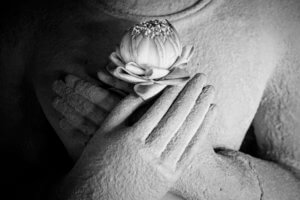
Buddha Nature: A Reader’s Guide

In the eleventh century, the great Tibetan scholar-practitioner Gampopa (1079–1153) began his composition known as The Jewel Ornament of Liberation with an exposition on the cause for awakening. What is the cause for awakening? In the Vajrayana and third turning traditions of Buddhism it is buddha nature. Buddha nature is our innate potential for awakening and the root of many Buddhist paths. Zen, Yogacara, and all Tibetan traditions of Buddhism teach that the goal of enlightenment is not some distant aspiration but is accessible in the immediate present.
Historically, the source of the buddha nature teachings can be traced back to the third turning of the Buddha’s teachings, with textual sources dating back to the 3rd and 4th century C.E. and the Indian Yogācāra tradition. This tradition follows the tenet systems laid out by the Indian masters Vasubandhu (4th–5th century) and Asaṅga (fourth century). Their writings that continue to inspire throughout the ages include the Thirty Verses, the Twenty Verses, the Treatise on the Three Natures, and the Demonstration of Action by Vasubandhu as well as other scriptures on the storehouse consciousness, buddha nature, and the perfect luminosity of the union of appearances and emptiness that were written by his contemporaries and commentators, Asaṅga, Dharmakīrti (seventh century), and Dignāga (480–540). These foundational individuals have inspired an astoundingly profound line of philosophers and commentators in the Tibetan Buddhist traditions, and their developments permeate most all other Mahāyāna centers of Buddhist practice and philosophy.
There are now many literary works that explore the topic of buddha nature, provoking the realization of enlightenment and making that realization relatable to the very essence of our lives. In one’s relationship to the spiritual path, it is important to have a sense of our potential and our innate capability to grow and progress. It is this innate strength that is reflected in the Buddha and his commentators’ teachings on our perfect buddha nature. Enjoy this wonderful lion’s roar that echoes throughout the many publications featured below.
Masters of the Yogacara Tradition
The two most prominent figures from the Indian Buddhist tradition are Asanga and Maitreya. The tradition tells that Asanga meditated in a cave for 12 years until finally Maitreya appeared to him and brought him to Tushita heaven where he received the Five Treatises of Maitreya. The Five Treatise explain the profound meaning of emptiness and luminous nature. They include:
- The Ornament of Clear Realization
- The Oranment of the Mahayana Sutras
- Distinguishing the Middle from the Extremes
- Distinguishing Dharma and Dharmata
- The Sublime Continuum
Asang's teaching on the foundation of our spiritual potency shows that there is nothing substantial to our limitations—our true state of being is never dampened by the adventitious pains clouding our experiences. It can be both inspiring, intimidating, and even shocking when first encountering the language used to express buddha nature. Especially if you are used to the common Buddhist philosophies regarding impermanence, selflessness, and suffering, the position of the third turning teachings can be jarring in its emphasis on the positive expressions of the ultimate—the descriptive qualities of the luminosity of mind.
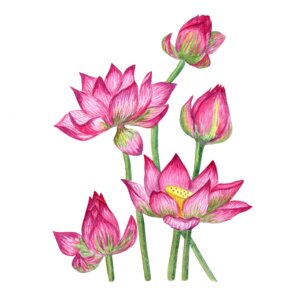
For example, in The Uttaratantrashastra Asaṅga wrote these traditional examples that capture the brilliance and purity of our essential buddha nature,
Like a lake filled with unpolluted water gradually overspread by lotus flowers,
Like the full moon released from Rahu’s mouth and the sun liberated from a sea of clouds,
It is free from affliction. Being free from pollution and possessing qualities,
[buddhahood] is endowed with the brilliant light rays [of correct and complete vision].
-From Buddha Nature: The Mahayana Uttaratantra Shastra, translated by Rosemarie Fuchs

$34.95 - Paperback
By: Rosemarie Fuchs & Asanga & Jamgon Kongtrul Lodro Taye & Khenpo Tsultrim Gyamtso & Maitreya
All sentient beings, without exception, have buddha nature—the inherent purity and perfection of the mind, untouched by changing mental states. Thus there is neither any reason for conceit nor self-contempt. This is obscured by veils that are removable and do not touch the inherent purity and perfection of the nature of the mind. The Mahayana Uttaratantra Shastra, one of the “Five Treatises” said to have been dictated to Asanga by the Bodhisattva Maitreya, presents the Buddha’s definitive teachings on how we should understand this ground of enlightenment and clarifies the nature and qualities of buddhahood. This seminal text details with great clarity the view that forms the basis for Vajrayana, and especially Mahamudra, practice.
A Feast of the Nectar of the Supreme Vehicle
$69.95 - Hardcover
By: Asanga & Jamgon Mipham & Maitreya & Padmakara Translation Group
A monumental work and Indian Buddhist classic, the Ornament of the Mahāyāna Sūtras (Mahāyānasūtrālamkāra) is a precious resource for students wishing to study in-depth the philosophy and path of Mahāyāna Buddhism. This full translation and commentary outlines the importance of Mahāyāna, the centrality of bodhicitta or the mind of awakening, the path of becoming a bodhisattva, and how one can save beings from suffering through skillful means.
This definitive composition of Mahāyāna teachings was imparted in the fourth century by Maitreya to the famous adept Asanga, one of the most prolific writers of Buddhist treatises in history. Asanga’s work, which is among the famous Five Treatises of Maitreya, has been studied, commented upon, and taught by Buddhists throughout Asia ever since it was composed.
Ornament of the Great Vehicle Sutras
$69.95 - Hardcover
By: Dharmachakra Translation Committee & Asanga & Jamgon Mipham & Maitreya & Khenpo Shenga
The Buddhist masterpiece Ornament of the Great Vehicle Sūtras, often referred to by its Sanskrit title, Mahāyānasūtrālaṃkāra, is part of a collection known as the Five Maitreya Teachings, a set of philosophical works that have become classics of the Indian Buddhist tradition. Maitreya, the Buddha’s regent, is held to have entrusted these profound and vast instructions to the master Asaṅga in the heavenly realm of Tuṣita.
The Ornament provides a comprehensive description of the bodhisattva’s view, meditation, and enlightened activities. Bodhisattvas are beings who, out of vast love for all sentient beings, have dedicated themselves to the task of becoming fully awakened buddhas, capable of helping all beings in innumerable and vast ways to become enlightened themselves. To fully awaken requires practicing great generosity, patience, energy, discipline, concentration, and wisdom, and Maitreya’s text explains what these enlightened qualities are and how to develop them.
$22.95 - Paperback
By: Dharmachakra Translation Committee & Asanga & Jamgon Mipham & Ju Mipham & Maitreya & Khenpo Shenga
Middle Beyond Extremes contains a translation of the Buddhist masterpiece Distinguishing the Middle from Extremes. This famed text, often referred to by its Sanskrit title, Madhyantavibhaga, is part of a collection known as the Five Maitreya Teachings. Maitreya is held to have entrusted these profound and vast instructions to the master Asanga in the heavenly realm of Tusita.
Distinguishing the Middle from Extremes employs the principle of the three natures to explain the way things seem to be as well as the way they actually are. It is presented here alongside commentaries by two outstanding masters of Tibet’s nonsectarian Rimé movement, Khenpo Shenga and Ju Mipham.
Distinguishing Phenomena from Their Intrinsic Nature
$24.95 - Hardcover
By: Dharmachakra Translation Committee & Asanga & Jamgon Mipham & Ju Mipham & Maitreya & Khenpo Shenga
The Buddhist masterpiece Distinguishing Phenomena from Their Intrinsic Nature, often referred to by its Sanskrit title, Dharmadharmatāvibhaṅga, is part of a collection known as the Five Maitreya Teachings, a set of philosophical works that have become classics of the Indian Buddhist tradition. Maitreya, the Buddha’s regent, is held to have entrusted these profound and vast instructions to the master Asaṅga in the heavenly realm of Tuṣita. Outlining the difference between appearance and reality, this work shows that the path to awakening involves leaving behind the inaccurate and limiting beliefs we have about ourselves and the world around us and opening ourselves to the limitless potential of our true nature.
Maitreya's Distinguishing Phenomena and Pure Being
$24.95 - Paperback
By: Asanga & Jamgon Mipham & Jim Scott
Distinguishing Phenomena and Pure Being was composed by Maitreya during the golden age of Indian Buddhism. Mipham's commentary supports Maitreya's text in a detailed analysis of how ordinary, confused consciousness can be transformed into wisdom. Easy-to-follow instructions guide the reader through the profound meditation that gradually brings about this transformation. This important and comprehensive work belongs on the bookshelf of any serious Buddhist practitioner—and indeed of anyone interested in realizing their full potential as a human being.
The Mahāyānasaṃgraha, published here with its Indian and Tibetan commentaries in three volumes, presents virtually everything anybody might want to know about the Yogācāra School of Mahāyāna Buddhism. It discusses in detail the nature and operation of the eight kinds of consciousness, the often-misunderstood notion of “mind only” (cittamātra), dependent origination, the cultivation of the path and its fruition in terms of the four wisdoms, and the three bodies (kāyas) of a buddha.
Volume 1 presents the translation of the Mahāyānasaṃgraha along with a commentary by Vasubandhu. The introduction gives an overview of the text and its Indian and Tibetan commentaries, and explains in detail two crucial elements of the Yogācāra view: the ālaya-consciousness and the afflicted mind (klistamanas).
Volume 2 presents translations of the commentary by Asvabhāva and an anonymous Indian commentary on the first chapter of the text. These translations are supplemented in the endnotes by excerpts from Tibetan commentaries and related passages in other Indian and Chinese Yogācāra works.
Volume 3 includes appendices with excerpts from other Indian and Chinese Yogācāra texts and supplementary materials on major Yogācāra topics in the Mahāyānasaṃgraha.
Including an insightful exploration in the translators introduction of the meditative tradition that uses Maitreya’s Mahāyānottaratantra as the basis for Mahāmudra instruction and the Shentong approach to understanding emptiness, this book discusses a wide range of topics connected with the notion of buddha nature as presented in Indo-Tibetan Buddhism. Included within is an overview of the sūtra sources of the tathāgatagarbha teachings and the different ways of explaining the meaning of this term, as well as new translations of the Maitreya treatise Mahāyānottaratantra (Ratnagotravibhāga) and its Indian and Tibetan commentaries.
Buddha Nature and the Zen Tradition
Shakyamuni Buddha said, “Living beings all are buddha nature.
The Tathagata is continuously abiding and not subject to change.”
—Mahāparinirvāṇa Sūtra
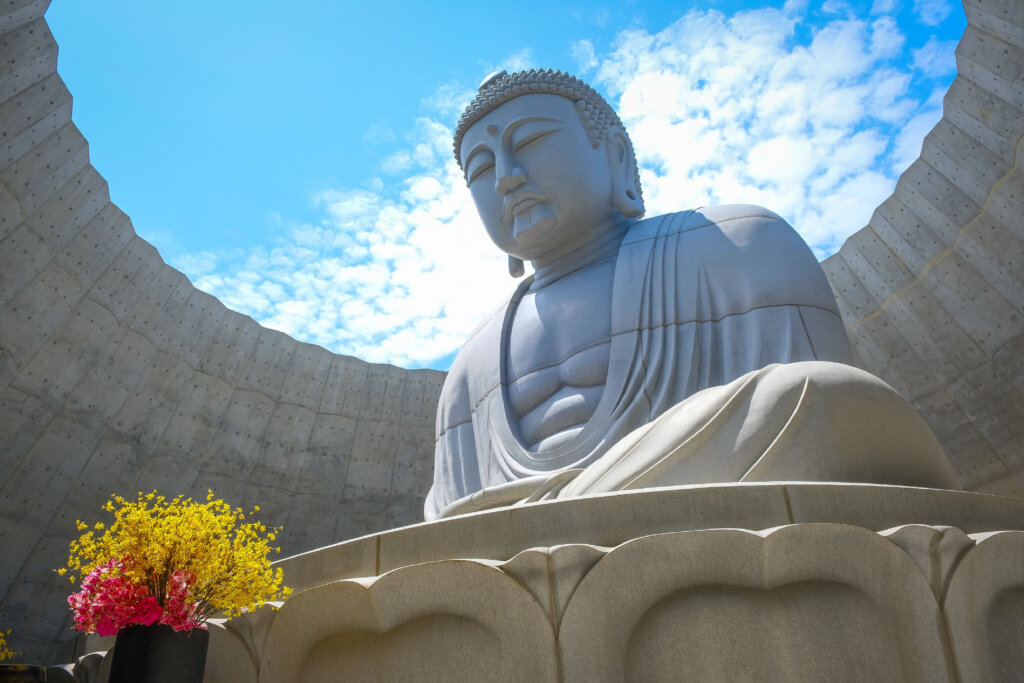
There is an impressive lineage of Zen writers that that have commented on the buddha nature teachings. Dōgen (1200–1253), whose instructional lectures were collected in his Shōbōgenzo, is one such Japanese thinker and practitioner whose writings on buddha nature have been published in numerous volumes. For example, Dōgen made the controversial and insightful decision to translate the above passage from the Chinese edition of the Mahāparinirvāṇa Sūtra as, “Living beings all are buddha nature.” Many other translations simply state that all beings have Buddha nature. Take a peek at the unique perspective Dōgen provides on buddha nature in his commentary on the above passage from the Mahāparinirvāṇa Sūtra found in his Treasury of the True Dharma Eye,
Know that the are of all are buddha nature is beyond are and are not. All are are the buddha words, the buddha tongue. They are the eyeball of buddha ancestors and the nostrils of patched-robed monks. The words all are are not limited to embryonic beings, original beings, inconceivable beings, or any other kind of beings. Furthermore, they do not mean causal beings or imaginary beings. All are are free from mind, object, essence, or aspects. This being so, the body, mind, and environs of Living beings all are [buddha nature] are not limited to the increasing power of action, imaginary causation, things as they are, or the practice realization of miraculous powers.
Such excerpts serve to guide readers toward a more complete understanding of the unique position Dōgen takes when addressing buddha nature. In the remainder of the chapter, difficult points are introduced in relation to this topic such as: the scope of buddha nature and its interconnectedness to living and inanimate beings, buddha nature and the importance of paradox and kōan practice, and narratives that colorfully illustrate Dōgen’s own journey of realization. His commentaries are included in various titles by Shambhala Publications such as the Treasury of the True Dharma Eye, Zen Enlightenment, Rational Zen, and The Essential Dōgen.
Works on Buddha Nature from the Zen Traditions
A presentation of Zen Buddhism in old Korea, this book is a window to the teachings of the fourteenth-century Zen master known as T’aego. Enjoy this translation of a direct and authentic account of Korean Zen Buddhism.
Enlightenment Unfolds is a sequel to Kaz Tanahashi's previous collection, Moon in a Dewdrop, which has become a primary source on Dogen for Western Zen students. Enlightenment Unfolds presents even more of the incisive and inspiring writings of this seminal figure, focusing on essays from his great life work, Treasury of the True Dharma Eye, as well as poems, talks, and correspondence, much of which appears here in English for the first time. Read More
In this collection of essays on Buddhist meditation, a variety of the traditions represented by teachers from China, Japan, and Korea, present the depth of “pure, clear meditation.” Zazen, as it is known in the Zen traditions, aims to capture the essence of traditional Buddhist meditation, and it is concisely presented here through various teacher’s perspectives.
Taken from personal correspondences he would have with his student, this book presents Zen Master Seung Sahn from the perspective of his most intimate teachings. Seung Sahn received hundreds of letters per month, and some of the best are included here with his personal and enlightened responses to issues surrounding work, relationships, suffering, and the teacher-student relationship.
Zen has often been portrayed as being illogical and mystifying, even aimed at the destruction of the rational intellect. These new translations of the thirteenth-century Zen master Dōgen—one of most original and important Zen writers—illustrate the rational side of Zen, which has been obscured through the centuries, tainting people's understanding of it.
The Zen tradition has created a huge body of writings, and the writings associated with the so-called Five Houses of Zen are widely considered to be foremost in importance. These Five Houses were not schools of Zen but were styles of teaching represented by the most outstanding masters in Zen history. Many of the writings of these great masters are translated here for the first time.
This book is a simple, exhaustive—and often hilarious—presentation of the essence of Zen by Master Seung Sahn, a modern Zen Master of considerable renown. In his many years of teaching throughout the world Master Sahn has become known for his ability to cut to the heart of Buddhist teaching in a way that is strikingly clear, yet free of esoteric and academic language. In this book, he presents the basic teachings of Buddhism and Zen in a way that is wonderfully accessible for beginners—yet rich with stories, insights, and personal experiences that will also benefit long-time students of meditation.
Within Zen Enlightenment the renowned scholar Heinrich Dumoulin traces the development of Zen and the concept of enlightenment from its origins in India through its development in China to its fruition in Japan. With a special emphasis on the historical path Zen has followed, the development of koan practice, and the Japanese Zen master Dōgen, Heinrich presents in a fresh way the enlightenment experiences of a variety of contemporary Zen practitioners.
Below, Paula Arai, author of Painting Enlightenment, reads an original poem to accompany the painting, “Do Ants Have Buddha-Nature?”, by Iwasaki Tsuneo. Painting Enlightenment is a beautiful exposition on a collection of paintings by Tsuneo illustrating the profound meaning of the Heart Sutra.
Buddha Nature and Tibetan Buddhism
Since the perfect buddhakaya radiates,
Since suchness is undifferentiable,
And because of the disposition,
All beings always possess the buddha heart.
—When the Clouds Part (Uttaratantrashastra)
translated by Karl Brunnhölzl
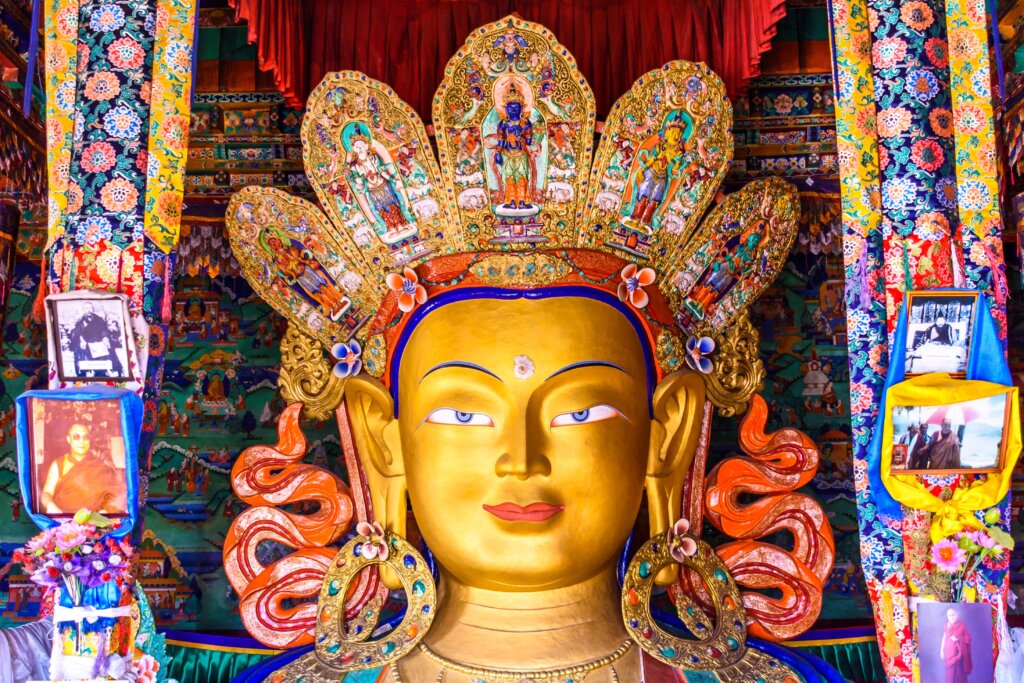
Although many of the great Tibetan Buddhist scholars and practitioners share the same root lineage, the various schools of Tibetan Buddhism eventually developed subtle philosophical differences with respect to buddha nature. There are many ways that the Tibetan traditions developed to systematically teach about buddha nature. For example, the highly systematized Tibetan traditions held unique philosophical positions regarding the usefulness of conceptual activity, sūtrayāna and mantrayāna supports, and rangtong (“empty of self”) and shentong (“empty of other”) approaches to buddha nature.
The differences in views on buddha nature in Tibetan Buddhism—Gampopa’s teachings on mahāmudrā, the emptiness-centered Gelug presentation, the Jonang ‘empty of other’ presentation by Venerable Dölpopa Sherab Gyaltsen (1292–1361), and the Nyingma position on Buddha-nature, help encapsulate the subtleties of the buddha nature teachings passed down through Tibetan Buddhism’s lineage of wisdom. The dialogue the ensues between these various viewpoints has led to the rich heritage of Tibetan Buddhist philosophy, preserving the highest and most subtle points of the Buddha’s teachings.
In Gampopa’s chapter on Buddha nature mentioned above, he quotes from Maitreya’s Ornament for the Mahāyāna (mdo sde rgyan),
Suchness, in all places is without distinction, but when it is refined, it is called “Buddhahood”. Therefore, it is that with which all beings are endowed.
If you ask for a reason that all beings can be shown to have Buddha-nature, these are the reasons: The dharmakāya, being emptiness, pervades all beings; suchness is indivisible; and it exists in the heritage of all sentient beings. Therefore, because of these three reasons, sentient beings possess Buddha-nature.
Works on Buddha Nature From the Kagyu Tradition
Known for his mastery of teachings across sectarian lines, his treatises on medicine and astrology, and his work as spiritual advisor to the last Yuan emperor of China, Rangjung Dorje (1284–1339) is considered one of the most important and influential figures in Tibetan Buddhist history. First recognized as a tulku, or reincarnated Buddhist master, at the age of five, Rangjung Dorje became a major Kagyu lineage holder and instituted the Tibetan system of reincarnation-based inheritance that led to the formation of important lineages of tulkus such as the Dalai Lamas.
Nāgārjuna's works sit at the heart of Mahāyāna Buddhist thought and practice, but he was renowned in Asia not only for his Madhyamaka work, but also his poetic collection of praises, most famously In Praise of Dharmadhatu. This book explores the scope, contents, and significance of Nāgārjuna’s scriptural legacy in India and Tibet, focusing primarily on this seminal work. The translation of Nāgārjuna’s hymn to buddha nature—here called dharmadhatu—shows how buddha nature is temporarily obscured in the experience of ordinary sentient beings, gradually uncovered through the path of bodhisattvas, and finally revealed in full bloom as buddhahood. Included is a translation of the text’s earliest and most extensive commentary by the Third Karmapa, Rangjung Dorje (1284–1339), supplemented by relevant excerpts from all other available commentaries.
Synthesizing Yogacara Madhyamaka and the classical teachings on buddha nature, this superb collection of writings on buddha nature by the Third Karmapa Rangjung Dorje (1284–1339) focuses on the transition from ordinary deluded consciousness to enlightened wisdom, the characteristics of buddhahood, and a buddha's enlightened activity. Rangjung Dorje not only shows that these teachings do not contradict each other but also that they supplement each other and share the same essential points in terms of the ultimate nature of mind and all phenomena. For those practicing the sūtrayāna and the vajrayāna in the Kagyu tradition, what these texts describe can be transformed into living experience.
On Buddha Essence: A Commentary on Rangjung Dorje's Treatise
by Khenchen Thrangu Rinpoche
According to Tibetan Buddhist tradition, human beings' true nature, or buddha essence, is the foundation from which all wisdom develops. In order to discover our buddha essence, the meditator needs to know how to meditate correctly and must properly understand the reasons for practicing meditation. Khenchen Thrangu—with clarity, warmth, and humor— explains buddha essence and how to discover it in ourselves by drawing on a classical text of the Kagyu lineage by Rangjung Dorje (the third Karmapa).
The Treasury of Knowledge: Book Six, Part Three
$44.95 - Hardcover
Translated by Elizabeth M. Callahan
Frameworks of Buddhist Philosophy presents a study of the themes and subtle philosophies developed over thousands of years of Buddhist composition. Written by the leading Tibetan scholar of the nineteenth century, Jamgön Kongtrül Lodrö Tayé, this work provides a brilliant overview of the development of Buddhism’s three vehicles and four philosophical systems.
Featured Online Course: Glimpses of Mahamudra
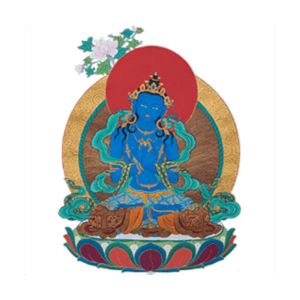
Mahamudra is a meditation tradition within tantric Buddhism that points to the nature of awareness itself, elevating our ordinary perception to the level of the sacred. In this view, all experiences arise from a mind that is naturally vast, empty, and luminous. In this online course, esteemed Buddhist teacher and editor Judith Lief takes us on a journey through the mahamudra teachings of Chögyam Trungpa Rinpoche as presented in his Profound Treasury of the Ocean of Dharma.
Using video recorded during a nine-day retreat, we’ll begin with a deep dive into shamatha-vipashyana meditation—the practice that builds our capacity for experiencing reality directly and completely. We’ll study the hinayana and mahayana—the foundational teachings of the Buddhist path that give us the tools to cultivate gentleness, wisdom, and compassion. We’ll discuss the importance of the heart-opening quality of devotion and the student-teacher relationship in entering the vajrayana. Finally, Lief will guide us in a series of practices and contemplations to glimpse the inherent, sky-like nature of the mind as clear, brilliant, and joyful.
Nyingma Texts that Emphasize Buddha Nature
The Precious Treasury of the Fundamental Nature
By Longchenpa
By Khangsar Tenpa'i Wangchuk
Translated by Padmakara Translation Group
Modern scholar and Nyingma master Khangsar Tenpa’i Wangchuk composed this first and only commentary on the fourteenth-century Buddhist master Longchenpa’s essential text, The Precious Treasury of the Fundamental Nature. The root text establishes the definitive view of the secret class of pith instructions of Dzogchen, the Great Perfection. Tenpa’i Wangchuk’s word-commentary elucidates the nature of phenomena adhering closely to the internal structure of Longchenpa’s verses, clearly presenting the four vajra principles of the nature of phenomena: nonexistence, evenness, spontaneous presence, and single nature.
The Padmakara Translation Group has provided a clear and fluid new translation of Longchenpa’s root text. The commentary by Khangsar Tenpa’i Wangchuk is here translated for the first time, commencing an extended project to render his entire collected works in English. This is an invaluable resource for students of Buddhism who wish to deepen their understanding of the nature of mind and phenomena as presented in the Great Perfection tradition.
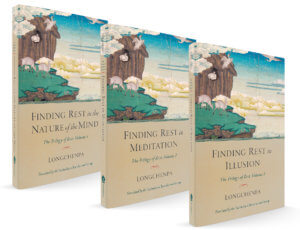
Longchenpa’s classic Buddhist manual for attaining liberation teaches us how to familiarize ourselves with our most basic nature—the clear, pristine, and aware mind. Written in the fourteenth century, this text is the first volume of Longchenpa’s Trilogy of Rest, a work of the Tibetan Dzogchen tradition.
Finding Rest in the Nature of Mind, Volume I is the profound and comprehensive presentation of the Buddhist view and path, combining the scholastic expository method with direct pith instructions designed for yogi practitioners.
Finding Rest in Meditation establishes the view of the Buddhist path generally, and specifically that of the teachings of the Great Perfection. It outlines the main points of meditation, namely, where one should meditate, what qualities a practitioner should possess and develop, and what should be practiced.
Finding Rest in Illusion describes in detail the conduct of those who have stabilized their recognition of the nature of the mind and how to apply the Buddhist view when relating to ordinary appearances. Drawing extensively from classic Buddhist works, the author uses well-known examples of illusion found throughout Mahāyāna literature to illustrate the illusory nature of both saṃsāra and nirvāṇa, thus revealing their ultimate nondual nature. This is an invaluable manual for any genuine student of Buddhism who wishes to truly find rest through the path of the Great Perfection.
Buddha Nature Teachings from Dolpopa and the Jonang Tradition
One of the only books about the controversial Buddhist master of Tibet, Dölpopa Sherab Gyaltsen (1292–1361). Dölpopa emphasized two contrasting definitions of the Buddhist theory of emptiness. He described relative phenomena as empty of self-nature, but absolute reality as only empty of other (i.e. relative) phenomena. He further identified absolute reality as the buddha nature or eternal essence present in all living beings. This view of an "emptiness of other," known in Tibetan as shentong, is Dölpopa's enduring legacy.
Jonang: The One Hundred and Eight Teaching Manuals
$39.95 - Hardcover
In this volume, Kongtrul expands on The One Hundred and Eight Guidebooks, a collection of teaching manuals compiled by the sixteenth-century Tibetan master Kunga Drolchok, adding Indic source texts, Tibetan antecedents, and later interpretations. Though compiled by a Jonangpa abbot and transmitted by the Jonang tradition, these teaching manuals are actually drawn from the Kadam, Sakya, Kagyu, and, to a lesser extent, Nyingma traditions. They are succinct and impart practical wisdom, as transmitted by key figures like Kunga Chogdrub and Lowo Khenchen Sonam Lhundrub. Gyurme Dorje, the translator, provides extensive notes and helpful context throughout. The resulting volume preserves and integrates the diverse lineages of Tibetan Buddhism while providing useful advice to practitioners.
Jonang is part of Jamgön Kongtrul the Great's eighteen volume collection known as The Treasury of Precious Instructions. For more information on his work see the Treasury of Precious Instructions.
Masters on the Buddha Nature Tradition from the Lives of the Masters Series
Maitripa: India's Yogi of Nondual Bliss
Maitripa (986–1063) is one of the greatest and most influential Indian yogis of Vajrayana Buddhism. The legacy of his thought and meditation instructions have had a profound impact on Buddhism in India and Tibet, and several important contemporary practice lineages continue to rely on his teachings.
Early in his life, Maitripa gained renown as a monk and scholar, but it was only after he left his monastery and wandered throughout India as a yogi that he had a direct experience of nonconceptual realization. Once Maitripa awakened to this nondual nature of reality, he was able to harmonize the scholastic teachings of Buddhist philosophy with esoteric meditation instructions. This is reflected in his writings that are renowned for evoking a meditative state in those who have trained appropriately. He eventually became the teacher of many well-known accomplished masters, including Padampa Sangyé and the translator Marpa, who brought his teachings to Tibet.
Drawing on Maitripa’s autobiographical writings and literary work, this book is the first comprehensive portrait of the life and teachings of this influential Buddhist master. Klaus-Dieter Mathes also offers the first complete English translation of his teachings on nonconceptual realization, which is the foundation of Mahamudra meditation.
Xuanzang: China's Legendary Pilgrim and Translator
In the fall of 629, Xuanzang (600–662), a twenty-nine-year-old Buddhist monk, left the capital of China to begin an epic pilgrimage across the country, through the deserts of Central Asia, and into India. His goal was to locate and study authentic Buddhist doctrine and practice, then bring the true teachings back to his homeland. Over the course of nearly seventeen years, he walked thousands of miles and visited hundreds of Buddhist monasteries and monuments. He studied with the leading teachers of his day and compiled a written account of his travels that remains a priceless record of premodern Indian history, religion, and culture. When Xuanzang finally returned to China in 645, he brought with him a treasure trove of new texts, relics, and icons. This transmission of Indian Buddhist teachings to China, made possible by Xuanzang’s unparalleled vision and erudition, was a landmark moment in the history of East Asian Buddhism.
As with many great pre-modern religious figures, the legends surrounding Xuanzang’s life have taken on lives of their own. His story has been retold, reshaped, and repurposed by generations of monastics and laypeople. In this comprehensive and engaging account, Benjamin Brose charts a course between the earliest, most reliable accounts of Xuanzang’s biography and the fantastic legends that later developed, such as those in the classic Chinese novel Journey to the West. Xuanzang remains one of the most consequential monks in the rich history of Buddhism in East Asia. This book is an indispensable introduction to his extraordinary life and enduring legacies.
Online Articles, Excerpts and other Resources Related to Buddha Nature
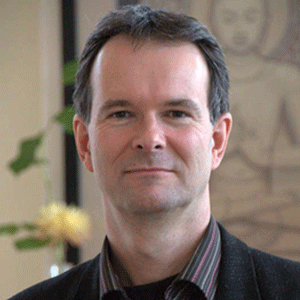
The Five Maitreya Texts: The "Zip Files" of the Mahāyāna
The five works that the Tibetan tradition ascribes to Maitreya resemble zip files that contain all the profound and vast topics of the Buddhist teachings. In their traditional order: The Ornament of Clear Realization comments on the emptiness taught in the Prajnaparamita Sutras and on what happens in the minds of bodhisattvas familiarizing themselves with emptiness on the paths and bhumis. Read More
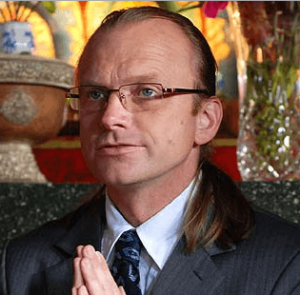
Translating the Maitreya Treatises: An Interview with Thomas Doctor
We recently interviewed Thomas Doctor, a translator on the Dharmachakra Translation Committee, about the importance of their recent translations of the Maitreya texts and commentaries. Read More
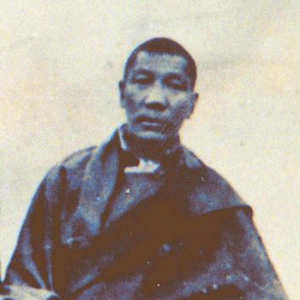
Khenpo Shenga (1871–1927) wrote commentaries on all 13 texts.
The Thirteen Core Indian Buddhist Texts: A Reader's Guide
There are thirteen classics of Indian Mahayana philosophy, still used in Tibetan centers of education throughout Asia and beyond, particularly the Nyngma tradition, with overlap with the others. They cover the subjects of vinaya, abhidharma, Yogacara, Madhyamika, and the path of the Bodhisattva. They are some of the most frequently quoted texts found in works written from centuries ago to today. Below is a reader's guide to these works.

